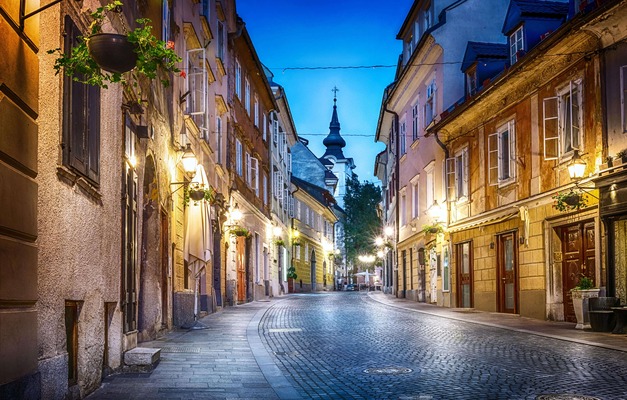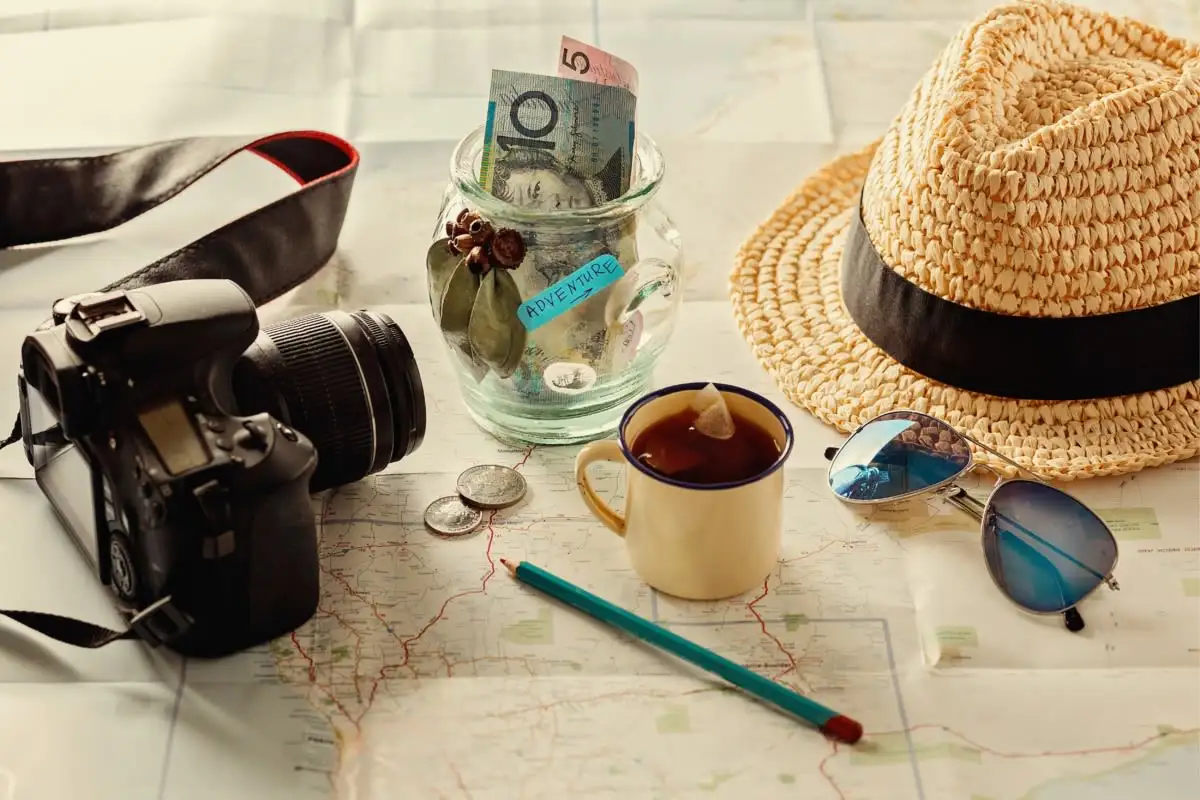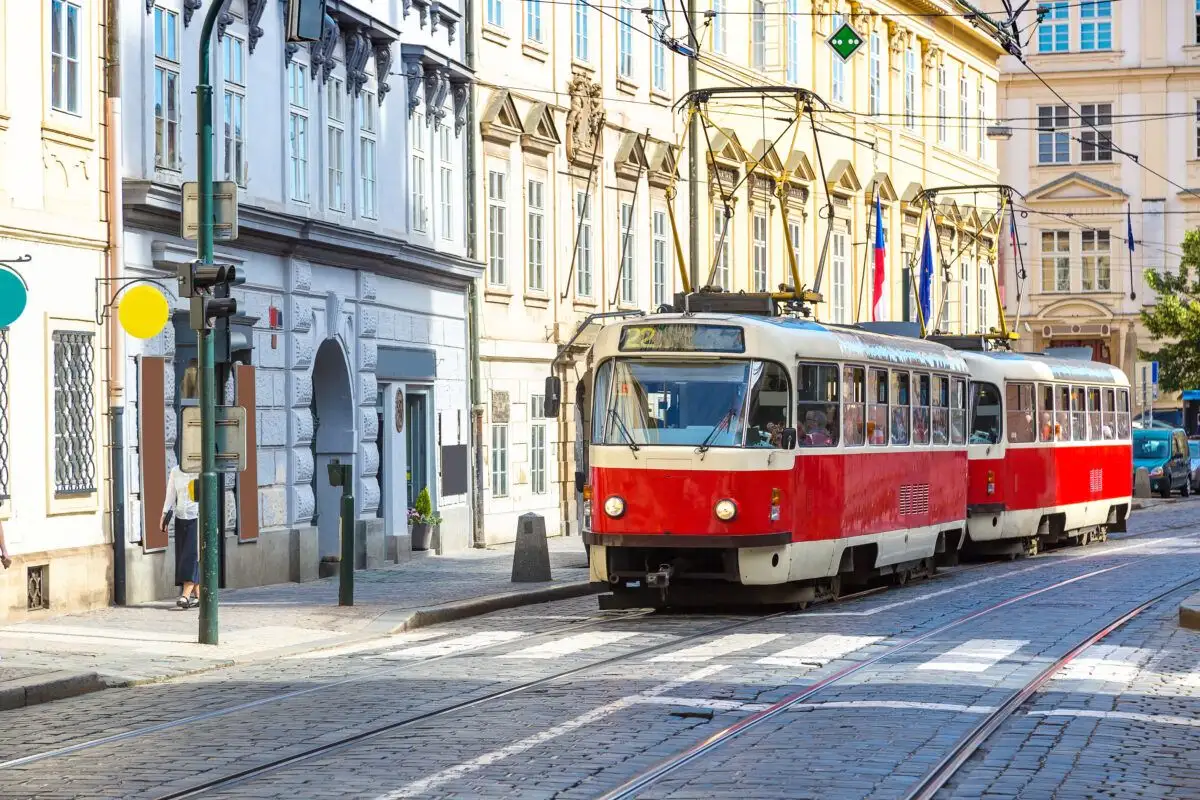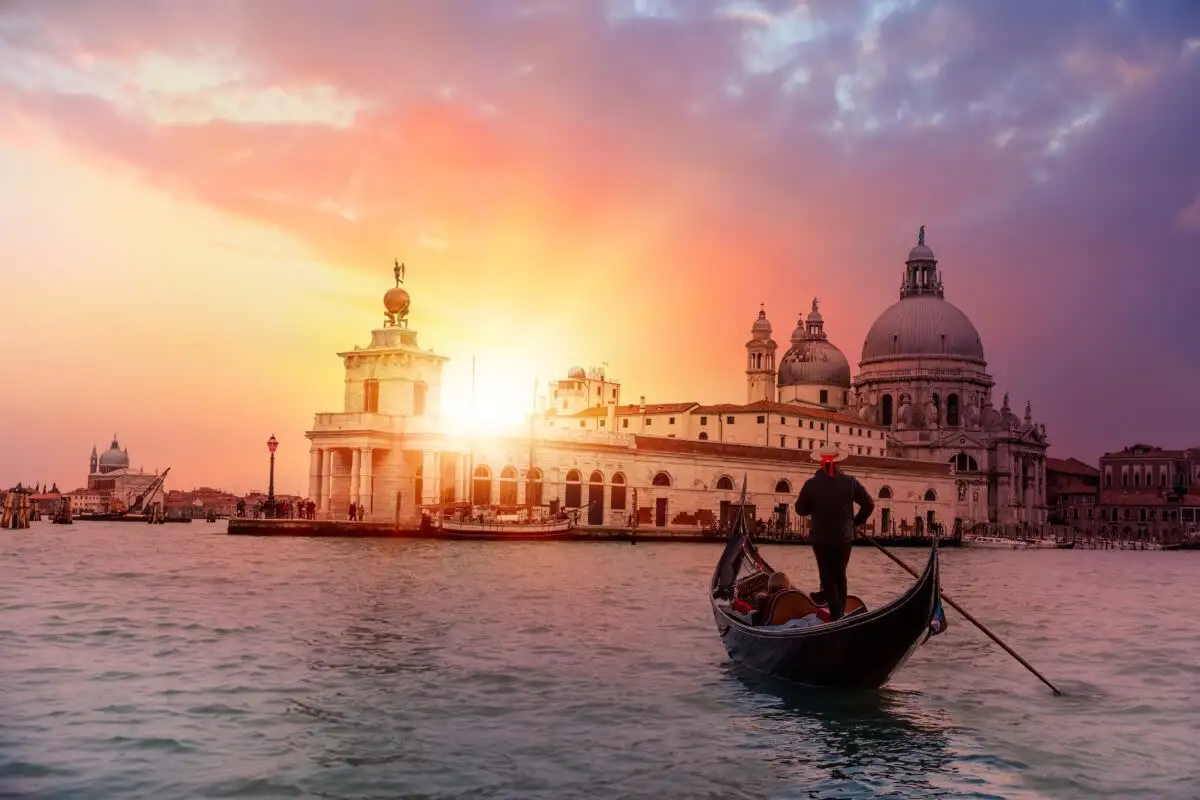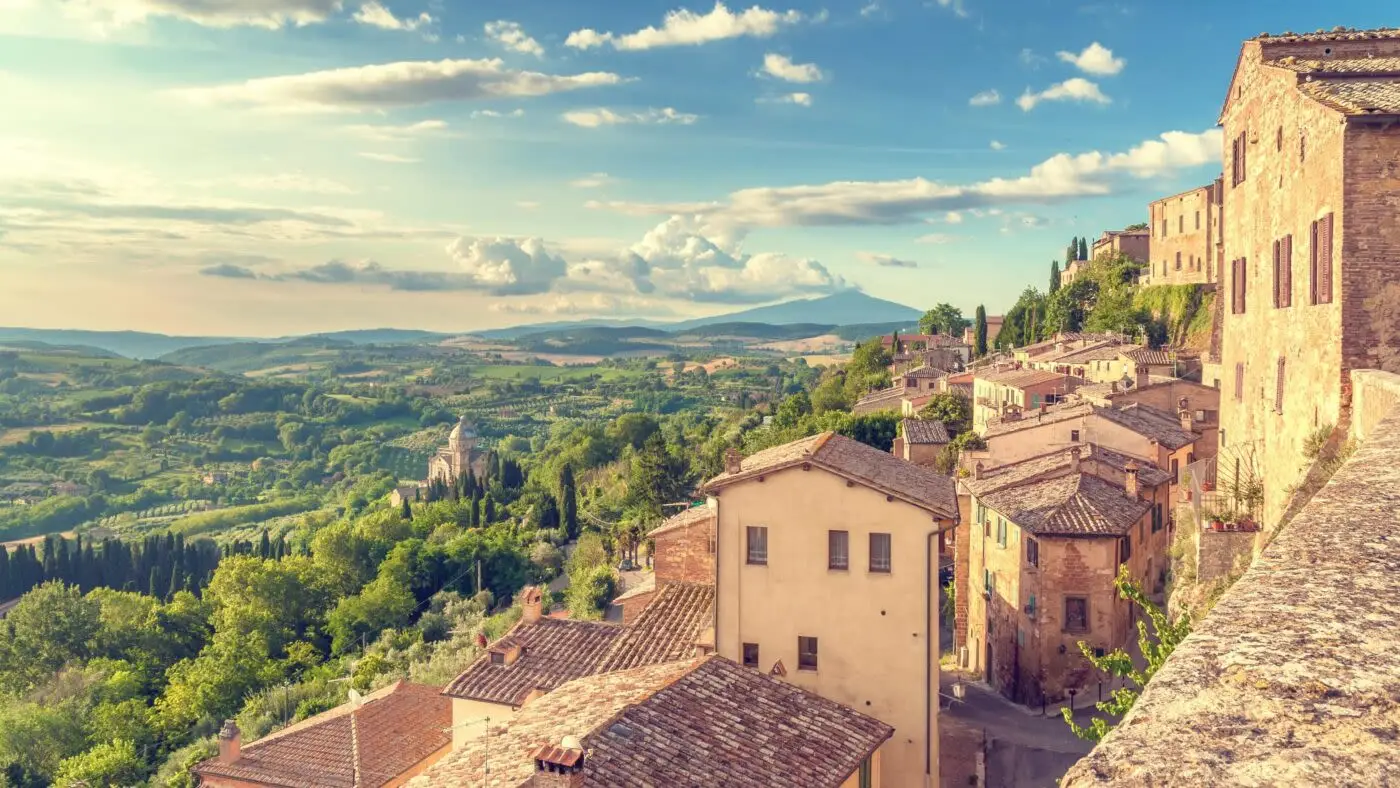
Southern European Treasures: A 15-Day Cultural Odyssey in Portugal, Spain & Italy
 15 Day Tour of Lisbon, Seville, Barcelona and Rome
15 Day Tour of Lisbon, Seville, Barcelona and Rome
Overview
Trip Map
Itinerary
Inclusions
Reviews
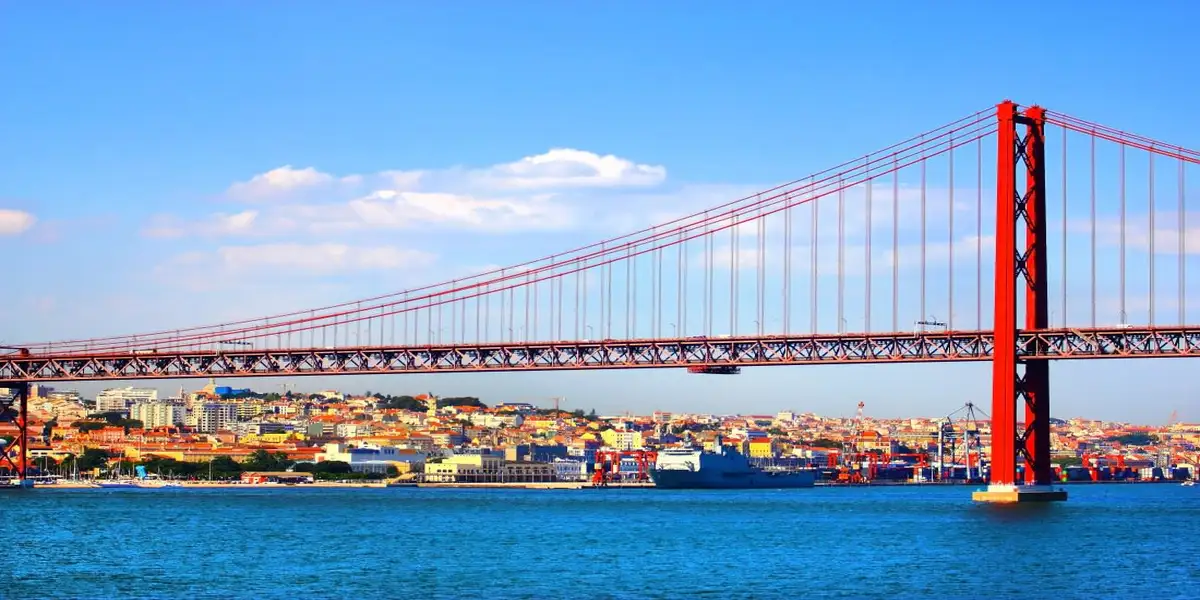
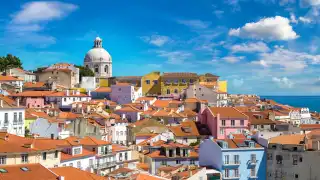
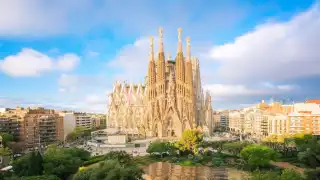




15 Days 14 Nights
Best Time: Jan-Dec
Cultural Exploration
History Buffs
Spanning 15 days across some of southern Europe's most storied cities, this odyssey introduces you to the best of Portuguese, Spanish, and Italian culture and history. Journey through Lisbon's historic streets, enjoy Seville's flamenco rhythms, discover Barcelona's Gothic splendors, and experience Rome's imperial majesty. You'll learn the secrets of each city on five private guided tours, and also take a full-day private guided excursion to the captivating cliff-side Andalusian town of Ronda. Our tailor-made itinerary guidance, provided via our mobile app, will allow you to explore without stress and get around like a local.
- Uncover Lisbon's blend of Moorish legacies and maritime charm while touring Bairro Alto and Baixa.
- Marvel at the Royal Alcazar's splendor and feel Andalusia's spirit in a flamenco night in Seville.
- See Gaudí's whimsical Eixample designs and the Gothic Quarter's charm on private tours in Barcelona.
- Be enchanted by Rome on a private tour of the Colosseum and visit the Vatican's splendor.
- Bask in the beauty of Sintra, Ronda & Girona on daytrips to Portugal & Spain's scenic countryside.
Spanning 15 days across some of southern Europe's most storied cities, this odyssey introduces you to the best of Portuguese, Spanish, and Italian culture and history. Journey through Lisbon's historic streets, enjoy Seville's flamenco rhythms, discover Barcelona's Gothic splendors, and experience Rome's imperial majesty. You'll learn the secrets of each city on five private guided tours, and also take a full-day private guided excursion to the captivating cliff-side Andalusian town of Ronda. Our tailor-made itinerary guidance, provided via our mobile app, will allow you to explore without stress and get around like a local.
- Uncover Lisbon's blend of Moorish legacies and maritime charm while touring Bairro Alto and Baixa.
- Marvel at the Royal Alcazar's splendor and feel Andalusia's spirit in a flamenco night in Seville.
- See Gaudí's whimsical Eixample designs and the Gothic Quarter's charm on private tours in Barcelona.
- Be enchanted by Rome on a private tour of the Colosseum and visit the Vatican's splendor.
- Bask in the beauty of Sintra, Ronda & Girona on daytrips to Portugal & Spain's scenic countryside.

Baixa
Neighborhood

Alcazar
UNESCO World Heritage

Seville Cathedral
Churches & Monasteries

Plaza de Espana
Architecture

Santa Cruz
Jewish Heritage

Triana District
Neighborhood

Plaza de Toros
National Site

Sagrada Familia
ArchitectureChurches & Monasteries

Colosseum
Historic Landmarks
Must see sights

Baixa
Neighborhood

Alcazar
UNESCO World Heritage

Seville Cathedral
Churches & Monasteries

Plaza de Espana
Architecture

Santa Cruz
Jewish Heritage

Triana District
Neighborhood

Plaza de Toros
National Site

Sagrada Familia
ArchitectureChurches & Monasteries

Colosseum
Historic Landmarks
Starting from
$5274
per person
 Not included
Not included Secure Your Customizable Trip
Enter your details to embark on a journey that can be tailored just for you.
Start
Travelers
0 travelers
Add Room
Remove Room
Preferred Hotel Stars
Select Hotel Stars
Craft Your Own Itinerary
Select your interests and destinations for a trip plan inspired by you.
Southern European Treasures Trip - Map & Itinerary
Enable/Disable Map Scrolling
Click To Make Map Interactive

Southern European Treasures Trip Timeline
 Edit Details
Edit DetailsArrival
3 nights
Lisbon
Portugal
Air: 1h5m
3 nights
Seville
Spain
Train: 3h
Train: 3h
4 nights
Barcelona
Spain
Air: 2h0m
4 nights
Rome
Italy
Departure
Day-By-Day Itinerary of Southern European Treasures Trip
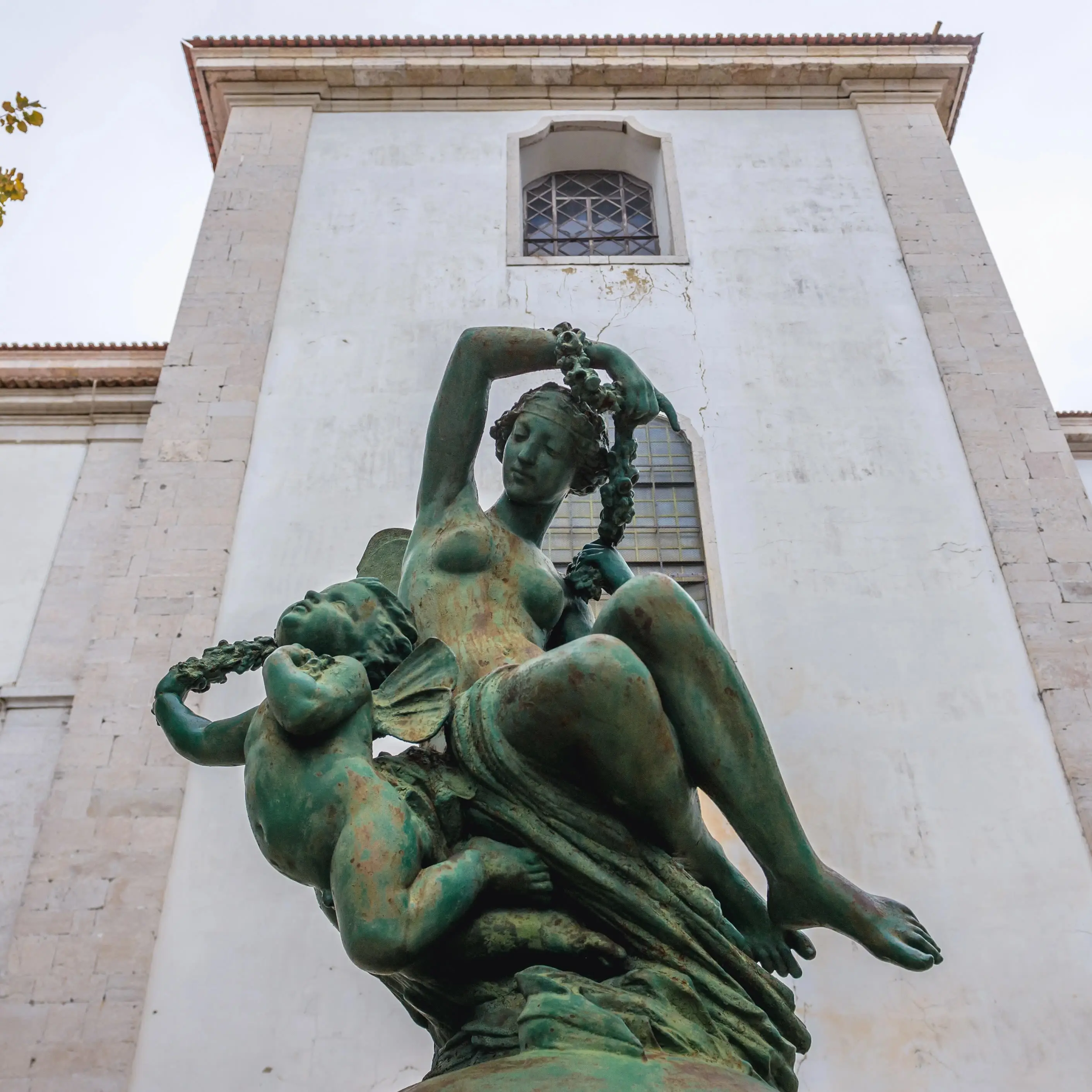
Day 1
Arrive Lisbon
Day 1
Arrive Lisbon



To Be Determined
Taxi from Airport
Lisbon has one main airport, Aeroporto Humberto Delgado. The most affordable way from the airport to central Lisbon is by the Metro Red Line, up to a 40-minute ride. Oftern quicker are taxis, Ubers and Bolts. Taxi may be pick up by the stands directly outside your terminal and Uber and Bolt can pick up people at the airport (with certain complications). You can also arrange a private transfer. A ride to the city center will take 20-40 minutes depending on traffic and will cost between 12-25€ for a taxi.

Day 1
Arrive Lisbon


Day 1
Arrive Lisbon




To Be Determined:
Taxi from Airport
Mid-Day to Late Afternoon:
Graca & Alfama
Late Afternoon/Early Evening:
Baixa


Day 2
Lisbon
Day 2
Lisbon


10:00 AM - 1:00 PM
Introduction to Lisbon Walking Tour
Immerse yourself in the centuries of history on this 3 hour winding walking tour through the heart of Lisbon. Get acquainted with Lisbon's three most influential neighbourhoods, Bairro Alto, Chiado and Baixa with an expert Lisbon guide who specialises in history and archaeology.

Day 2
Lisbon



Day 3
Lisbon
Day 3
Lisbon

Morning to Late Afternoon
Excursion to Sintra
Sintra is a UNESCO World Heritage site renowned for its stunning landscapes and cultural heritage. Often described as a fairytale destination, Sintra boasts a wealth of historical palaces, castles, and gardens that connect them. Wander through the whimsical Pena Palace, with its vibrant colors and eclectic architecture, or explore the mysterious Quinta da Regaleira, known for its enchanting gardens and enigmatic Initiation Well. The town itself is a charming blend of narrow, cobbled streets, busy shops, and delightful cafes. Surrounded by lush forests and offering spectacular views, Sintra is an escape that captivates visitors with its blend of natural beauty and architectural wonders.

The Moorish Castle of Sintra
Add your footsteps to those of kings, guards, lovers and thrill-seekers.
Show More

Quinta da Regaleira
Explore the mysterious grounds of this 19th-century chateau... They were designed to be mysterious.
Show More

National Palace of Pena
Scale the heights to this pleasure-dome of Portuguese Royalty.
Show More

Palace of Sintra
Gain a sense of Portuguese history while wandering this castle's lavish rooms.
Show More

The Moorish Castle of Sintra
Add your footsteps to those of kings, guards, lovers and thrill-seekers.
Show More

Quinta da Regaleira
Explore the mysterious grounds of this 19th-century chateau... They were designed to be mysterious.
Show More

National Palace of Pena
Scale the heights to this pleasure-dome of Portuguese Royalty.
Show More

Palace of Sintra
Gain a sense of Portuguese history while wandering this castle's lavish rooms.
Show More
prev
next

Day 3
Lisbon


The Moorish Castle of Sintra
 Highlight of Excursion to Sintra
Highlight of Excursion to SintraAdd your footsteps to those of kings, guards, lovers and thrill-seekers.
The Moorish Castle of Sintra, perched high on the hills of the Sintra Mountains in Portugal, is a dramatic ruin offering a glimpse into the region's medieval past. Constructed during the 8th and 9th centuries by the Moors, this fortress served as a strategic defensive outpost. Visitors can walk along its restored battlements, which provide breathtaking panoramic views of Sintra, the Atlantic Ocean, and the lush surrounding forests. The castle's stone walls, towers, and ancient cisterns evoke the era of Muslim rule and the subsequent Christian Reconquest. Exploring the Moorish Castle of Sintra is a journey through history, where you can imagine the lives of its inhabitants while enjoying one of the most spectacular vistas in Portugal.

Quinta da Regaleira
 Highlight of Excursion to Sintra
Highlight of Excursion to SintraExplore the mysterious grounds of this 19th-century chateau... They were designed to be mysterious.
Quinta da Regaleira is an ornate estate located near Sintra's historic center, famous for its elaborate gardens and mysterious symbolism. Commissioned by the wealthy Portuguese businessman António Augusto Carvalho Monteiro and designed by Italian architect Luigi Manini, the estate was completed in 1910 and the estate's design reflects Monteiro's interests in alchemy, Freemasonry, and the Rosicrucians. In 1997, it was purchased by the Portuguese government, has becoming a popular tourist destination.

National Palace of Pena
 Highlight of Excursion to Sintra
Highlight of Excursion to SintraScale the heights to this pleasure-dome of Portuguese Royalty.
The National Palace of Pena, perched atop a peak in the Sintra Mountains of Portugal, is a striking example of 19th-century Romanticism. This colorful palace, in vivid hues of red and yellow, is a UNESCO World Heritage site and one of Portugal's Seven Wonders. Originally a monastery, it was transformed into a royal retreat by King Ferdinand II, who infused the design with eclectic elements from Gothic, Renaissance, and Moorish styles. Visitors can explore its lavishly decorated interiors, including the opulent Royal Dining Room and the serene Chapel of Our Lady of Pena. The palace is surrounded by the Pena Park, a sprawling forested area with exotic plants, winding paths, and stunning viewpoints. A visit to the National Palace of Pena offers a magical glimpse into Portugal's royal history and architectural splendor.

Palace of Sintra
 Highlight of Excursion to Sintra
Highlight of Excursion to SintraGain a sense of Portuguese history while wandering this castle's lavish rooms.
The National Palace of Sintra is a stunning example of Manueline and Moorish architecture. A significant site since the 15th century, it is the best-preserved medieval royal residence in Portugal. Distinguished by its two massive, conical chimneys, the palace contains ornate rooms such as the Swan Room, the Magpie Room, and the Coats of Arms Room, each adorned with intricate tilework and ceiling paintings. The palace also features beautifully landscaped courtyards and patios, offering lofty views of the surrounding landscape. A visit to the National Palace of Sintra reveals the lifestyle of Portuguese royalty and the artistic heritage of the region.

The Moorish Castle of Sintra
 Highlight of Excursion to Sintra
Highlight of Excursion to SintraAdd your footsteps to those of kings, guards, lovers and thrill-seekers.
The Moorish Castle of Sintra, perched high on the hills of the Sintra Mountains in Portugal, is a dramatic ruin offering a glimpse into the region's medieval past. Constructed during the 8th and 9th centuries by the Moors, this fortress served as a strategic defensive outpost. Visitors can walk along its restored battlements, which provide breathtaking panoramic views of Sintra, the Atlantic Ocean, and the lush surrounding forests. The castle's stone walls, towers, and ancient cisterns evoke the era of Muslim rule and the subsequent Christian Reconquest. Exploring the Moorish Castle of Sintra is a journey through history, where you can imagine the lives of its inhabitants while enjoying one of the most spectacular vistas in Portugal.

Quinta da Regaleira
 Highlight of Excursion to Sintra
Highlight of Excursion to SintraExplore the mysterious grounds of this 19th-century chateau... They were designed to be mysterious.
Quinta da Regaleira is an ornate estate located near Sintra's historic center, famous for its elaborate gardens and mysterious symbolism. Commissioned by the wealthy Portuguese businessman António Augusto Carvalho Monteiro and designed by Italian architect Luigi Manini, the estate was completed in 1910 and the estate's design reflects Monteiro's interests in alchemy, Freemasonry, and the Rosicrucians. In 1997, it was purchased by the Portuguese government, has becoming a popular tourist destination.

National Palace of Pena
 Highlight of Excursion to Sintra
Highlight of Excursion to SintraScale the heights to this pleasure-dome of Portuguese Royalty.
The National Palace of Pena, perched atop a peak in the Sintra Mountains of Portugal, is a striking example of 19th-century Romanticism. This colorful palace, in vivid hues of red and yellow, is a UNESCO World Heritage site and one of Portugal's Seven Wonders. Originally a monastery, it was transformed into a royal retreat by King Ferdinand II, who infused the design with eclectic elements from Gothic, Renaissance, and Moorish styles. Visitors can explore its lavishly decorated interiors, including the opulent Royal Dining Room and the serene Chapel of Our Lady of Pena. The palace is surrounded by the Pena Park, a sprawling forested area with exotic plants, winding paths, and stunning viewpoints. A visit to the National Palace of Pena offers a magical glimpse into Portugal's royal history and architectural splendor.

Palace of Sintra
 Highlight of Excursion to Sintra
Highlight of Excursion to SintraGain a sense of Portuguese history while wandering this castle's lavish rooms.
The National Palace of Sintra is a stunning example of Manueline and Moorish architecture. A significant site since the 15th century, it is the best-preserved medieval royal residence in Portugal. Distinguished by its two massive, conical chimneys, the palace contains ornate rooms such as the Swan Room, the Magpie Room, and the Coats of Arms Room, each adorned with intricate tilework and ceiling paintings. The palace also features beautifully landscaped courtyards and patios, offering lofty views of the surrounding landscape. A visit to the National Palace of Sintra reveals the lifestyle of Portuguese royalty and the artistic heritage of the region.
prev
next

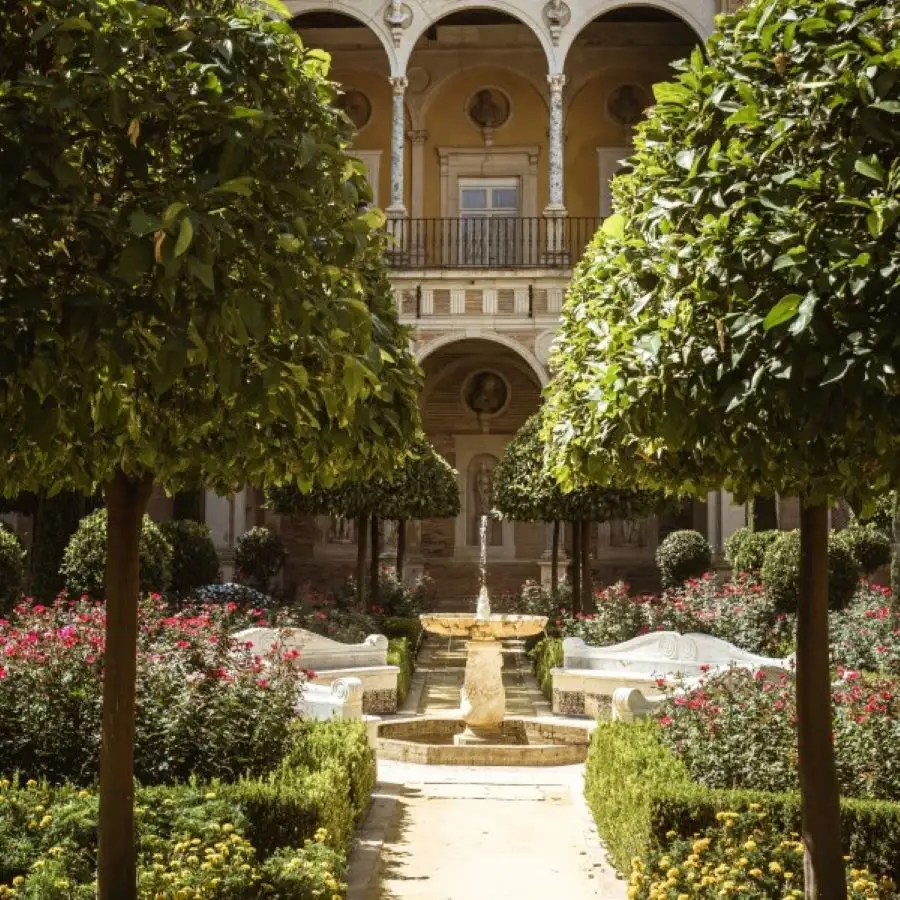
Day 4
Lisbon to Seville
Day 4
Lisbon to Seville





To Be Determined
Taxi to Airport
Lisbon Airport, officially known as Humberto Delgado Airport, is the busiest airport in Portugal. The journey from the city center to the airport typically takes around 15-20 minutes. The airport has two main terminals: Terminal 1 is used for international flights and most airlines, while Terminal 2 handles low-cost carriers. The airport is modern and equipped with various amenities, including shops, restaurants, and lounges. We recommend getting to the airport a little more than 2 hours to spare before your flight's departure to allow for any unexpected delays and time for check-in and security procedures. If you are flying outside of the Schengen zone, put 3 hours between your arrival and your flight.

Day 4
Lisbon to Seville


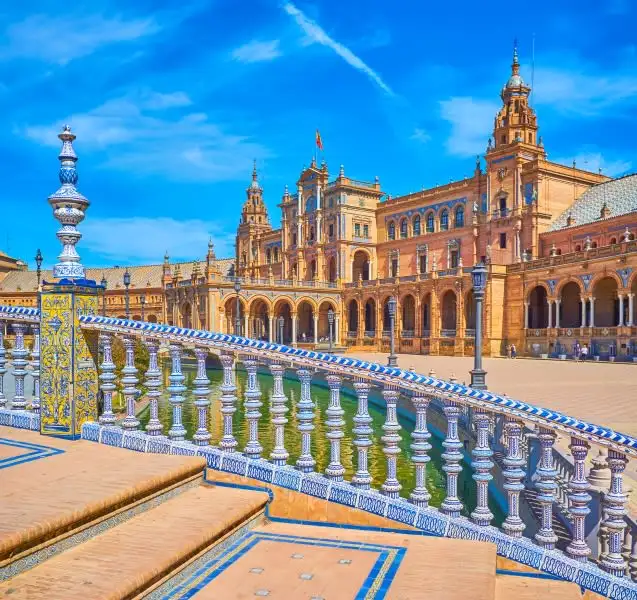
Day 5
Seville
Day 5
Seville



9:00 AM - 12:30 PM
Guided Highlights & Alcazar
Walk with your private guide and discover the long, eventful history of Seville. From Roman walls built at the command of Julius Caesar to the Royal Alcazar Palace of the Caliphs, from and St. Mary's Cathedral, a repurposed mosque, to the General Archive ofthe Indies containing the early records of New World exploration, this tour will amaze you. Your guide will help you skip the lines for the Alcazar, one of the triumphs of Moorish architecture, to illustrate the many winds of history that have blown through Seville's streets.
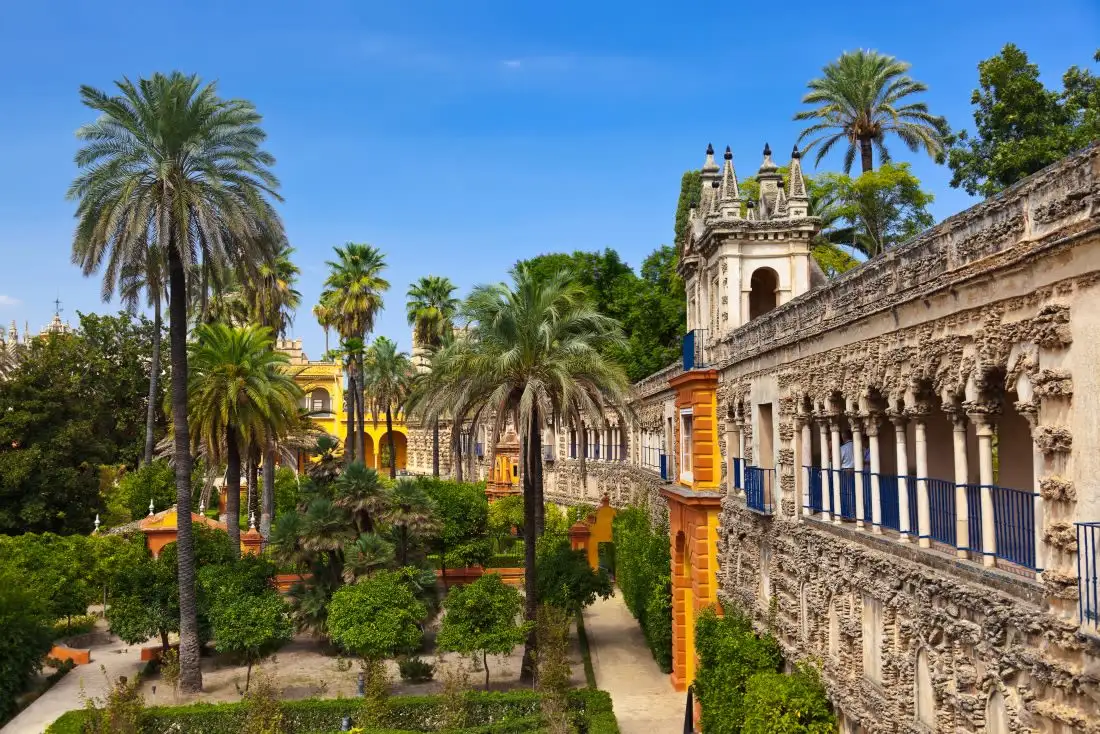
Seville Alcazar
The Seville Alcázar, a UNESCO World Heritage site, is a stunning blend of Mudéjar, Gothic, Renaissance, and Baroque architecture. Originally a 10th-century fortress, it features the exquisite Patio de las Doncellas, the grand Salón de Embajadores, and lush, expansive gardens.
Show More

Seville Alcazar
The Seville Alcázar, a UNESCO World Heritage site, is a stunning blend of Mudéjar, Gothic, Renaissance, and Baroque architecture. Originally a 10th-century fortress, it features the exquisite Patio de las Doncellas, the grand Salón de Embajadores, and lush, expansive gardens.
Show More

Seville Alcazar
The Seville Alcázar, a UNESCO World Heritage site, is a stunning blend of Mudéjar, Gothic, Renaissance, and Baroque architecture. Originally a 10th-century fortress, it features the exquisite Patio de las Doncellas, the grand Salón de Embajadores, and lush, expansive gardens.
Show More

Seville Alcazar
The Seville Alcázar, a UNESCO World Heritage site, is a stunning blend of Mudéjar, Gothic, Renaissance, and Baroque architecture. Originally a 10th-century fortress, it features the exquisite Patio de las Doncellas, the grand Salón de Embajadores, and lush, expansive gardens.
Show More

Seville Alcazar
The Seville Alcázar, a UNESCO World Heritage site, is a stunning blend of Mudéjar, Gothic, Renaissance, and Baroque architecture. Originally a 10th-century fortress, it features the exquisite Patio de las Doncellas, the grand Salón de Embajadores, and lush, expansive gardens.
Show More
prev
next

Day 5
Seville


Seville Alcazar
 Highlight of Guided Highlights & Alcazar
Highlight of Guided Highlights & AlcazarThe Seville Alcázar, a UNESCO World Heritage site, is a stunning blend of Mudéjar, Gothic, Renaissance, and Baroque architecture. Originally a 10th-century fortress, it features the exquisite Patio de las Doncellas, the grand Salón de Embajadores, and lush, expansive gardens.
The Seville Alcázar, a UNESCO World Heritage site, stands as a testament to Spain's rich cultural history and architectural prowess. Originally built in the 10th century as a fortress for the Cordoban governors of Seville, the Alcázar was later transformed into a magnificent royal palace. This evolution resulted in a unique blend of Mudéjar, Gothic, Renaissance, and Baroque styles, creating a visually stunning and historically significant monument. Visitors can explore the enchanting Patio de las Doncellas, a courtyard renowned for its intricate tilework and lush greenery. The Salón de Embajadores, once the site of grand state affairs, dazzles with its elaborate decoration and regal ambiance. The Alcázar's expansive gardens are a highlight, featuring tranquil fountains, fragrant orange trees, and meticulously maintained landscapes. These gardens offer a serene escape and a vivid glimpse into the luxurious lifestyles of Spain's Moorish and Christian rulers.

Seville Alcazar
 Highlight of Guided Highlights & Alcazar
Highlight of Guided Highlights & AlcazarThe Seville Alcázar, a UNESCO World Heritage site, is a stunning blend of Mudéjar, Gothic, Renaissance, and Baroque architecture. Originally a 10th-century fortress, it features the exquisite Patio de las Doncellas, the grand Salón de Embajadores, and lush, expansive gardens.
The Seville Alcázar, a UNESCO World Heritage site, stands as a testament to Spain's rich cultural history and architectural prowess. Originally built in the 10th century as a fortress for the Cordoban governors of Seville, the Alcázar was later transformed into a magnificent royal palace. This evolution resulted in a unique blend of Mudéjar, Gothic, Renaissance, and Baroque styles, creating a visually stunning and historically significant monument. Visitors can explore the enchanting Patio de las Doncellas, a courtyard renowned for its intricate tilework and lush greenery. The Salón de Embajadores, once the site of grand state affairs, dazzles with its elaborate decoration and regal ambiance. The Alcázar's expansive gardens are a highlight, featuring tranquil fountains, fragrant orange trees, and meticulously maintained landscapes. These gardens offer a serene escape and a vivid glimpse into the luxurious lifestyles of Spain's Moorish and Christian rulers.

Seville Alcazar
 Highlight of Guided Highlights & Alcazar
Highlight of Guided Highlights & AlcazarThe Seville Alcázar, a UNESCO World Heritage site, is a stunning blend of Mudéjar, Gothic, Renaissance, and Baroque architecture. Originally a 10th-century fortress, it features the exquisite Patio de las Doncellas, the grand Salón de Embajadores, and lush, expansive gardens.
The Seville Alcázar, a UNESCO World Heritage site, stands as a testament to Spain's rich cultural history and architectural prowess. Originally built in the 10th century as a fortress for the Cordoban governors of Seville, the Alcázar was later transformed into a magnificent royal palace. This evolution resulted in a unique blend of Mudéjar, Gothic, Renaissance, and Baroque styles, creating a visually stunning and historically significant monument. Visitors can explore the enchanting Patio de las Doncellas, a courtyard renowned for its intricate tilework and lush greenery. The Salón de Embajadores, once the site of grand state affairs, dazzles with its elaborate decoration and regal ambiance. The Alcázar's expansive gardens are a highlight, featuring tranquil fountains, fragrant orange trees, and meticulously maintained landscapes. These gardens offer a serene escape and a vivid glimpse into the luxurious lifestyles of Spain's Moorish and Christian rulers.

Seville Alcazar
 Highlight of Guided Highlights & Alcazar
Highlight of Guided Highlights & AlcazarThe Seville Alcázar, a UNESCO World Heritage site, is a stunning blend of Mudéjar, Gothic, Renaissance, and Baroque architecture. Originally a 10th-century fortress, it features the exquisite Patio de las Doncellas, the grand Salón de Embajadores, and lush, expansive gardens.
The Seville Alcázar, a UNESCO World Heritage site, stands as a testament to Spain's rich cultural history and architectural prowess. Originally built in the 10th century as a fortress for the Cordoban governors of Seville, the Alcázar was later transformed into a magnificent royal palace. This evolution resulted in a unique blend of Mudéjar, Gothic, Renaissance, and Baroque styles, creating a visually stunning and historically significant monument. Visitors can explore the enchanting Patio de las Doncellas, a courtyard renowned for its intricate tilework and lush greenery. The Salón de Embajadores, once the site of grand state affairs, dazzles with its elaborate decoration and regal ambiance. The Alcázar's expansive gardens are a highlight, featuring tranquil fountains, fragrant orange trees, and meticulously maintained landscapes. These gardens offer a serene escape and a vivid glimpse into the luxurious lifestyles of Spain's Moorish and Christian rulers.

Seville Alcazar
 Highlight of Guided Highlights & Alcazar
Highlight of Guided Highlights & AlcazarThe Seville Alcázar, a UNESCO World Heritage site, is a stunning blend of Mudéjar, Gothic, Renaissance, and Baroque architecture. Originally a 10th-century fortress, it features the exquisite Patio de las Doncellas, the grand Salón de Embajadores, and lush, expansive gardens.
The Seville Alcázar, a UNESCO World Heritage site, stands as a testament to Spain's rich cultural history and architectural prowess. Originally built in the 10th century as a fortress for the Cordoban governors of Seville, the Alcázar was later transformed into a magnificent royal palace. This evolution resulted in a unique blend of Mudéjar, Gothic, Renaissance, and Baroque styles, creating a visually stunning and historically significant monument. Visitors can explore the enchanting Patio de las Doncellas, a courtyard renowned for its intricate tilework and lush greenery. The Salón de Embajadores, once the site of grand state affairs, dazzles with its elaborate decoration and regal ambiance. The Alcázar's expansive gardens are a highlight, featuring tranquil fountains, fragrant orange trees, and meticulously maintained landscapes. These gardens offer a serene escape and a vivid glimpse into the luxurious lifestyles of Spain's Moorish and Christian rulers.
prev
next


Day 6
Seville
Day 6
Seville


8:30 AM - 4:30 PM
Ronda Guided Excursion
Ronda, perched dramatically above a deep gorge in the Andalusian mountains of Spain, is a city intergrated with its natural beauty. This ancient town, famously split by the El Tajo gorge, over which the impressive Puente Nuevo bridge stands, offers breathtaking views that have inspired artists and writers for centuries. Ronda is known for its historic bullring, one of the oldest in Spain, and boasts writer Earnest Hemmingway and dircetor Orson Welles as devotees. This private guided excursion to Ronda will allow you to visit Spain's oldest bullfighting ring, explore winding cobbled streets, discover local wines and tapas, and immerse themselves in a place where every corner reflects the millennia of Spanish history.

Ronda Bullring (Plaza de Toros)
Experience the grandeur of Plaza de Toros, Spain's oldest and most iconic bullring.
Show More

Waterfall & New Bridge View
Marvel at the iconic Mirador Puente Nuevo de Ronda, where breathtaking views of the New Bridge and a stunning waterfall come together in a perfect scene.
Show More

Ronda Bullring (Plaza de Toros)
Experience the grandeur of Plaza de Toros, Spain's oldest and most iconic bullring.
Show More

Waterfall & New Bridge View
Marvel at the iconic Mirador Puente Nuevo de Ronda, where breathtaking views of the New Bridge and a stunning waterfall come together in a perfect scene.
Show More

Ronda Bullring (Plaza de Toros)
Experience the grandeur of Plaza de Toros, Spain's oldest and most iconic bullring.
Show More

Waterfall & New Bridge View
Marvel at the iconic Mirador Puente Nuevo de Ronda, where breathtaking views of the New Bridge and a stunning waterfall come together in a perfect scene.
Show More
prev
next

Day 6
Seville


Ronda Bullring (Plaza de Toros)
 Highlight of Ronda Guided Excursion
Highlight of Ronda Guided ExcursionExperience the grandeur of Plaza de Toros, Spain's oldest and most iconic bullring.
Built in 1785, this Neoclassical bullring is renowned for its monumental architecture and historical significance as a birthplace of modern bullfighting. Explore the ring’s sandy arena, follow the path of bulls and bullfighters through the arena complex, and wander through its museum to learn about the art and tradition of bullfighting.
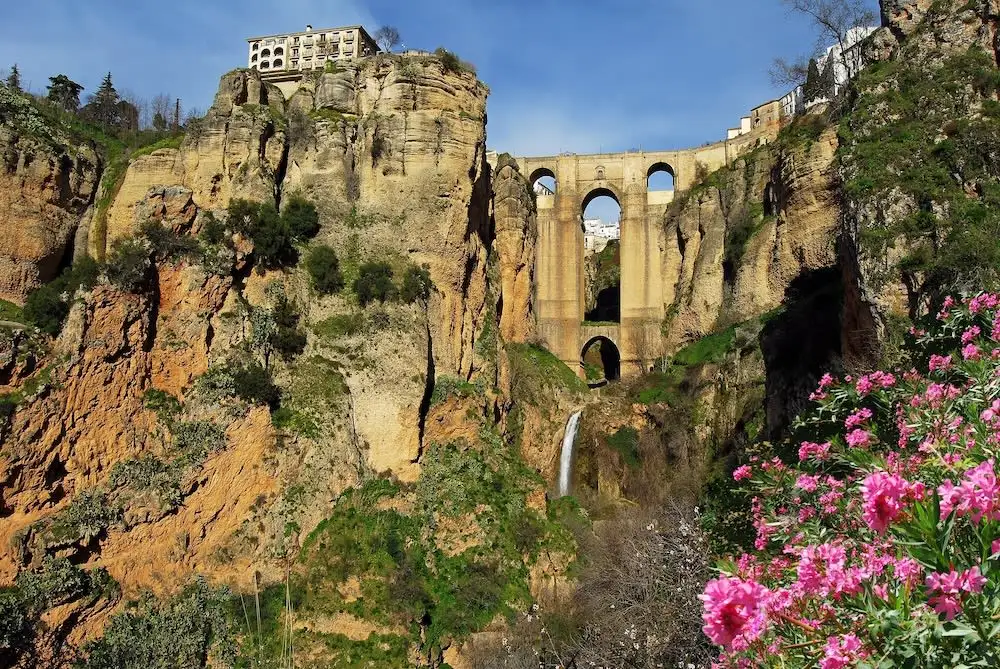
Waterfall & New Bridge View
 Highlight of Ronda Guided Excursion
Highlight of Ronda Guided ExcursionMarvel at the iconic Mirador Puente Nuevo de Ronda, where breathtaking views of the New Bridge and a stunning waterfall come together in a perfect scene.
This vantage point offers a dramatic perspective of the 18th-century Puente Nuevo, soaring 320 feet (98m) above the El Tajo gorge, with the Guadalevín River cascading into a beautiful waterfall below. The combination of the bridge’s architectural grandeur, the rushing water, and the gorge’s rugged cliffs creates an unforgettable panorama.

Ronda Bullring (Plaza de Toros)
 Highlight of Ronda Guided Excursion
Highlight of Ronda Guided ExcursionExperience the grandeur of Plaza de Toros, Spain's oldest and most iconic bullring.
Built in 1785, this Neoclassical bullring is renowned for its monumental architecture and historical significance as a birthplace of modern bullfighting. Explore the ring’s sandy arena, follow the path of bulls and bullfighters through the arena complex, and wander through its museum to learn about the art and tradition of bullfighting.

Waterfall & New Bridge View
 Highlight of Ronda Guided Excursion
Highlight of Ronda Guided ExcursionMarvel at the iconic Mirador Puente Nuevo de Ronda, where breathtaking views of the New Bridge and a stunning waterfall come together in a perfect scene.
This vantage point offers a dramatic perspective of the 18th-century Puente Nuevo, soaring 320 feet (98m) above the El Tajo gorge, with the Guadalevín River cascading into a beautiful waterfall below. The combination of the bridge’s architectural grandeur, the rushing water, and the gorge’s rugged cliffs creates an unforgettable panorama.

Ronda Bullring (Plaza de Toros)
 Highlight of Ronda Guided Excursion
Highlight of Ronda Guided ExcursionExperience the grandeur of Plaza de Toros, Spain's oldest and most iconic bullring.
Built in 1785, this Neoclassical bullring is renowned for its monumental architecture and historical significance as a birthplace of modern bullfighting. Explore the ring’s sandy arena, follow the path of bulls and bullfighters through the arena complex, and wander through its museum to learn about the art and tradition of bullfighting.

Waterfall & New Bridge View
 Highlight of Ronda Guided Excursion
Highlight of Ronda Guided ExcursionMarvel at the iconic Mirador Puente Nuevo de Ronda, where breathtaking views of the New Bridge and a stunning waterfall come together in a perfect scene.
This vantage point offers a dramatic perspective of the 18th-century Puente Nuevo, soaring 320 feet (98m) above the El Tajo gorge, with the Guadalevín River cascading into a beautiful waterfall below. The combination of the bridge’s architectural grandeur, the rushing water, and the gorge’s rugged cliffs creates an unforgettable panorama.
prev
next

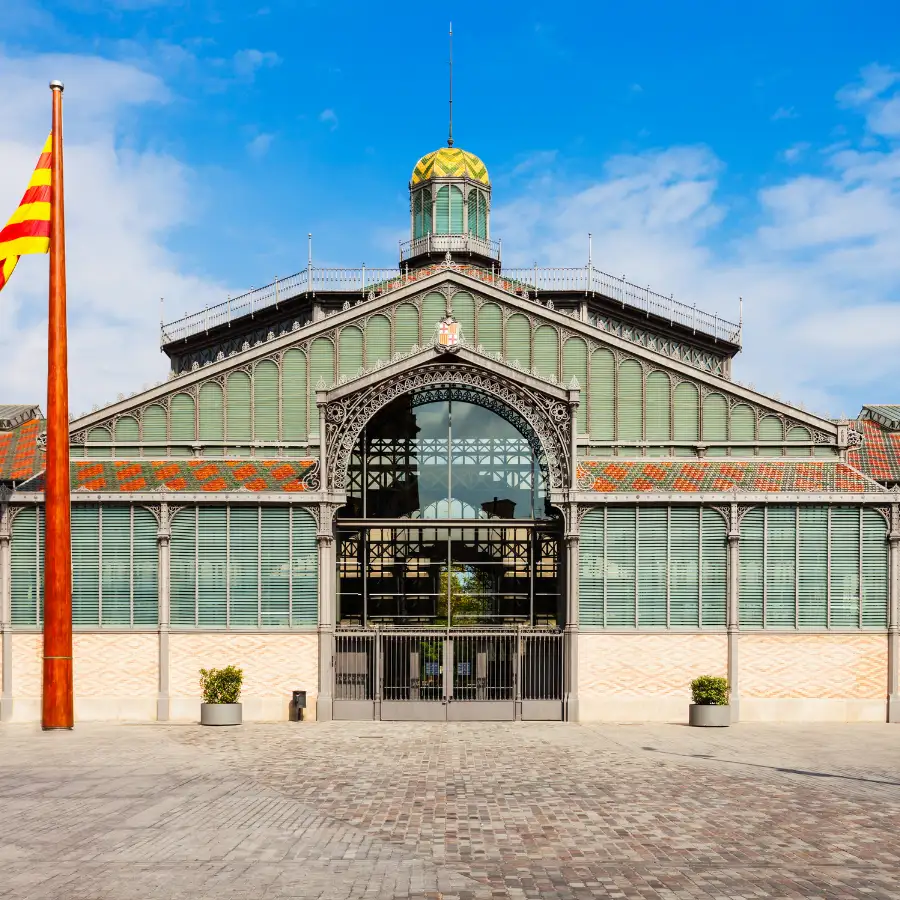
Day 7
Seville to Barcelona
Day 7
Seville to Barcelona




8:35 AM
Rail Drop-off
Most trains depart from Seville Santa Justa station, the third largest station in Spain and the largest in Seville. If you don't wish to take a private transfer you can easily call a taxi. Your hotel will be able to call a taxi for you or you can also call an Uber if you have the app downloaded on your mobile. Information on calling a taxi and navigating the train station on arrival will be provided in your full itinerary.

Day 7
Seville to Barcelona



Day 8
Barcelona
Day 8
Barcelona


9:00 AM - 1:00 PM
Barcelona - Medieval & Modernist Tour
Discover the transformation of Barcelona from its Roman roots to a vibrant, modern metropolis, celebrated for its international flair and unique charm. Unveil the secrets of the iconic Sagrada Familia and explore the ancient Roman and medieval quarters. Experience history and architecture come alive through stories, legends, and the expert insights of an Official Barcelona Private Guide. From the majestic Plaça Nova to the historic Jewish Call, embark on a journey through time, punctuated by a delightful break with tea or coffee and churros in a classic café.

Day 8
Barcelona


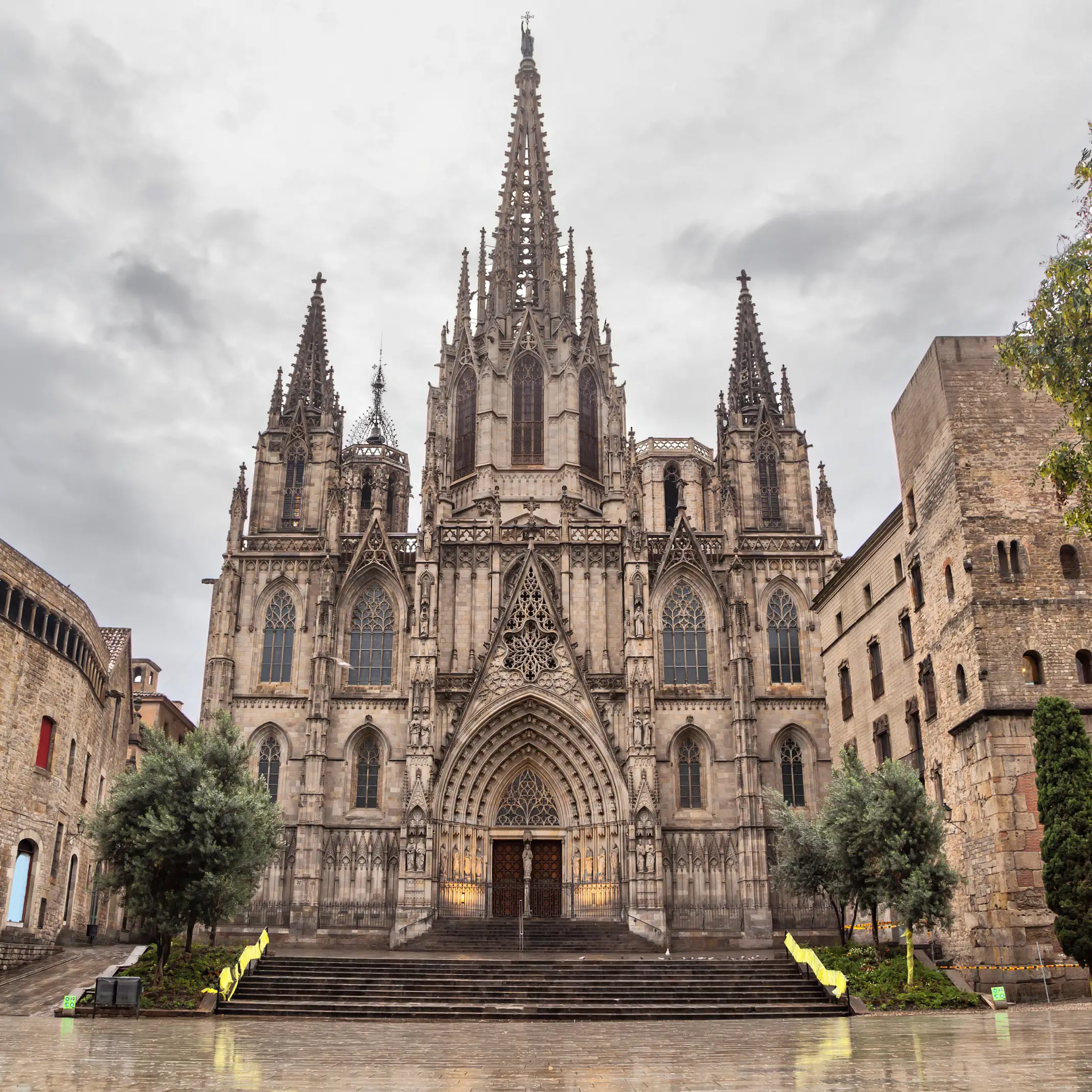
Day 9
Barcelona
Day 9
Barcelona



9:00 AM - 1:00 PM
Barcelona - Gothic Quarter & Picasso Museum
Join this four-hour tour through Barcelona's "Gothic Quarter", exploring its ancient, narrow streets. See the medieval walls, stroll down Las Ramblas, pass by the Gothic Cathedral and discover the Jewish Quarter before learning how this "Gothic Quarter" gave rise to an artist of the magnitude of Picasso. End your tour with a visit to the Picasso Museum. Note tickets are included for the Picasso Museum.

Day 9
Barcelona



Day 10
Barcelona
Day 10
Barcelona

Morning to Evening
Excursion to Girona
Nestled in the heart of Catalonia, Girona is a jewel of medieval architecture and vibrant history. This charming city, just a short train ride from Barcelona, captivates visitors with its picturesque Jewish Quarter, imposing Girona Cathedral, and the colorful houses lining the Onyar River. You can spend the day exploring the city's rich history, sights, museums and ancient walls. A visit here is a step back in time amidst the backdrop of modern Catalan life.

Girona Cathedral
Marvel at the grandeur of Girona Cathedral, an architectural gem blending Romanesque, Gothic, and Baroque styles, offering breathtaking views over the city from its elevated position.
Show More

Arab Baths
Step back in time at the Arab Baths, a stunning example of medieval architecture inspired by Roman and Moorish influences.
Show More

Cases de l'Onyar
Marvel at the colorful riverfront houses of the Onyar River, a picturesque sight that captures the essence of Girona's historical charm.
Show More

Girona Cathedral
Marvel at the grandeur of Girona Cathedral, an architectural gem blending Romanesque, Gothic, and Baroque styles, offering breathtaking views over the city from its elevated position.
Show More

Arab Baths
Step back in time at the Arab Baths, a stunning example of medieval architecture inspired by Roman and Moorish influences.
Show More

Cases de l'Onyar
Marvel at the colorful riverfront houses of the Onyar River, a picturesque sight that captures the essence of Girona's historical charm.
Show More

Girona Cathedral
Marvel at the grandeur of Girona Cathedral, an architectural gem blending Romanesque, Gothic, and Baroque styles, offering breathtaking views over the city from its elevated position.
Show More
prev
next

Day 10
Barcelona


Girona Cathedral
 Highlight of Excursion to Girona
Highlight of Excursion to GironaMarvel at the grandeur of Girona Cathedral, an architectural gem blending Romanesque, Gothic, and Baroque styles, offering breathtaking views over the city from its elevated position.
Perched atop 90 steps, the Girona Cathedral, also known as the Cathedral of Saint Mary of Girona, dominates the skyline with its imposing presence. Construction began in the 11th century, and its design evolved over centuries, incorporating a unique mix of architectural styles. The cathedral boasts the widest Gothic nave in the world, a testament to the city's historical wealth and artistic ambition. Inside, visitors can admire exquisite stained glass windows, a beautifully carved altarpiece, and a collection of medieval manuscripts and artifacts. The cathedral's location provides a stunning panoramic view of Girona, making it a must-visit highlight for both its historical significance and aesthetic beauty.

Arab Baths
 Highlight of Excursion to Girona
Highlight of Excursion to GironaStep back in time at the Arab Baths, a stunning example of medieval architecture inspired by Roman and Moorish influences.
The Arab Baths, or Banys Àrabs, in Girona are a unique blend of Roman and Moorish architectural styles, dating back to the 12th century. Originally constructed as public baths, they feature a distinct layout with a central octagonal pool, surrounded by slender columns and intricately carved arches. The baths were used for various purposes, including hygiene, relaxation, and social gatherings, reflecting the cultural influences of the time. Today, visitors can explore the well-preserved structure and admire its historical significance and architectural beauty. The serene ambiance and the detailed stonework offer a fascinating glimpse into Girona's rich past.

Cases de l'Onyar
 Highlight of Excursion to Girona
Highlight of Excursion to GironaMarvel at the colorful riverfront houses of the Onyar River, a picturesque sight that captures the essence of Girona's historical charm.
The Casas del Onyar are an iconic series of colorful houses that line the banks of the Onyar River in Girona, Spain. These vibrant facades, reflecting in the water, create a stunning visual spectacle that has become a symbol of the city. Dating back to medieval times, these houses have been meticulously preserved and restored, showcasing a variety of architectural styles and hues. Walking along the riverbank or crossing one of the charming pedestrian bridges, visitors can appreciate the harmonious blend of history and aesthetics. The area is not just visually appealing but also steeped in history, with each house telling a story of Girona's rich cultural heritage.

Girona Cathedral
 Highlight of Excursion to Girona
Highlight of Excursion to GironaMarvel at the grandeur of Girona Cathedral, an architectural gem blending Romanesque, Gothic, and Baroque styles, offering breathtaking views over the city from its elevated position.
Perched atop 90 steps, the Girona Cathedral, also known as the Cathedral of Saint Mary of Girona, dominates the skyline with its imposing presence. Construction began in the 11th century, and its design evolved over centuries, incorporating a unique mix of architectural styles. The cathedral boasts the widest Gothic nave in the world, a testament to the city's historical wealth and artistic ambition. Inside, visitors can admire exquisite stained glass windows, a beautifully carved altarpiece, and a collection of medieval manuscripts and artifacts. The cathedral's location provides a stunning panoramic view of Girona, making it a must-visit highlight for both its historical significance and aesthetic beauty.

Arab Baths
 Highlight of Excursion to Girona
Highlight of Excursion to GironaStep back in time at the Arab Baths, a stunning example of medieval architecture inspired by Roman and Moorish influences.
The Arab Baths, or Banys Àrabs, in Girona are a unique blend of Roman and Moorish architectural styles, dating back to the 12th century. Originally constructed as public baths, they feature a distinct layout with a central octagonal pool, surrounded by slender columns and intricately carved arches. The baths were used for various purposes, including hygiene, relaxation, and social gatherings, reflecting the cultural influences of the time. Today, visitors can explore the well-preserved structure and admire its historical significance and architectural beauty. The serene ambiance and the detailed stonework offer a fascinating glimpse into Girona's rich past.

Cases de l'Onyar
 Highlight of Excursion to Girona
Highlight of Excursion to GironaMarvel at the colorful riverfront houses of the Onyar River, a picturesque sight that captures the essence of Girona's historical charm.
The Casas del Onyar are an iconic series of colorful houses that line the banks of the Onyar River in Girona, Spain. These vibrant facades, reflecting in the water, create a stunning visual spectacle that has become a symbol of the city. Dating back to medieval times, these houses have been meticulously preserved and restored, showcasing a variety of architectural styles and hues. Walking along the riverbank or crossing one of the charming pedestrian bridges, visitors can appreciate the harmonious blend of history and aesthetics. The area is not just visually appealing but also steeped in history, with each house telling a story of Girona's rich cultural heritage.

Girona Cathedral
 Highlight of Excursion to Girona
Highlight of Excursion to GironaMarvel at the grandeur of Girona Cathedral, an architectural gem blending Romanesque, Gothic, and Baroque styles, offering breathtaking views over the city from its elevated position.
Perched atop 90 steps, the Girona Cathedral, also known as the Cathedral of Saint Mary of Girona, dominates the skyline with its imposing presence. Construction began in the 11th century, and its design evolved over centuries, incorporating a unique mix of architectural styles. The cathedral boasts the widest Gothic nave in the world, a testament to the city's historical wealth and artistic ambition. Inside, visitors can admire exquisite stained glass windows, a beautifully carved altarpiece, and a collection of medieval manuscripts and artifacts. The cathedral's location provides a stunning panoramic view of Girona, making it a must-visit highlight for both its historical significance and aesthetic beauty.
prev
next

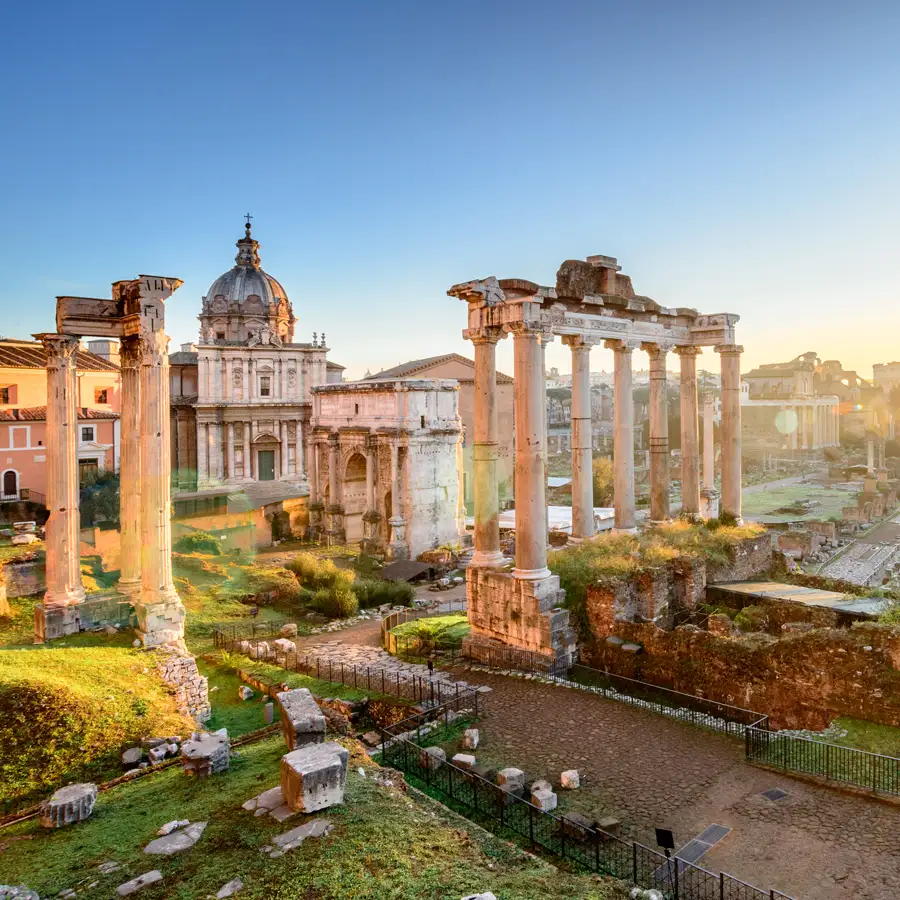
Day 11
Barcelona to Rome
Day 11
Barcelona to Rome





To Be Determined
Taxi to Airport
Josep Taradellas Barcelona-La Prat is Barcelona's major airport. Getting there from the center of Barcelona by taxi should cost between 30 to 50€. Private transfers are available. Uber and Lyft are available in limited numbers and priced like taxis. If you're feeling adventurous, you can also take the train from Barcelona Sants Main Train Station which costs considerably less than a taxi.

Day 11
Barcelona to Rome


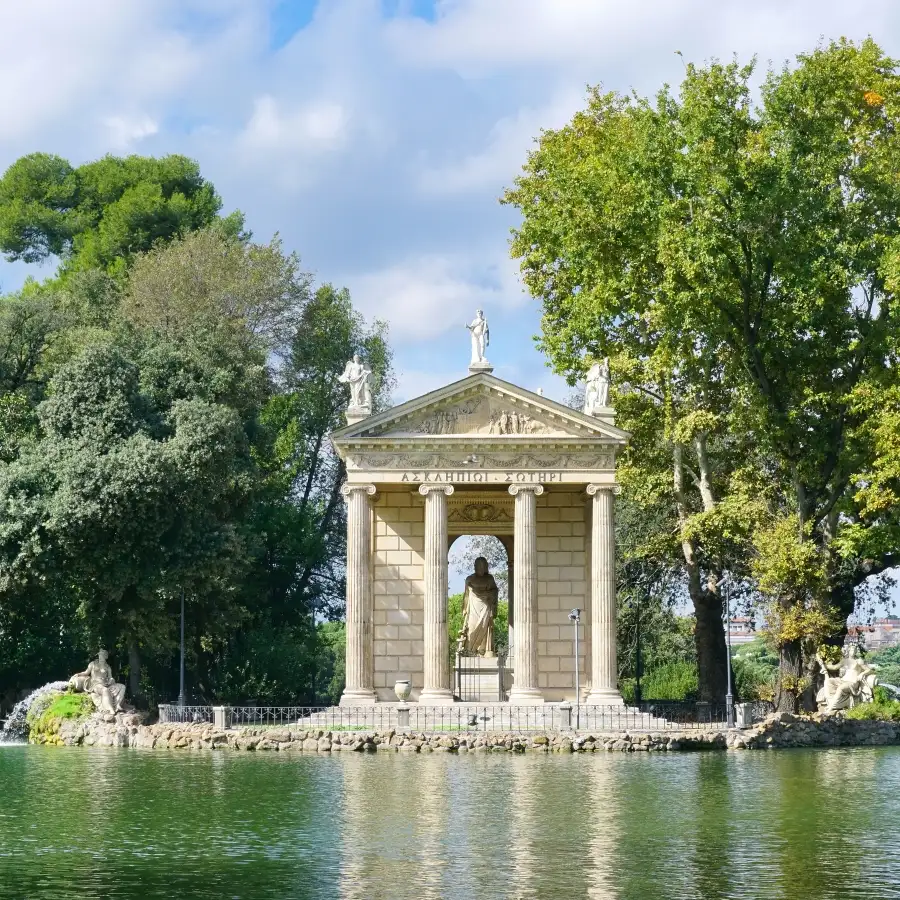
Day 12
Rome
Day 12
Rome



Morning
Villa Borghese Gardens
The Villa Borghese Park acts as the main respite and sanctuary for Romans and tourists alike away from the din of central Rome. Overlooking Piazza del Popolo and only a stone's throw from the Spanish Steps, the area was a district of market gardens, olive groves, and patrician villas until taken over as summer estates by the city's wealthy during the Renaissance. The most notable is Villa Borghese, which now houses one of the city's best non-Vatican art collections. The adjacent Pincio Gardens offer a grand vista over Rome.
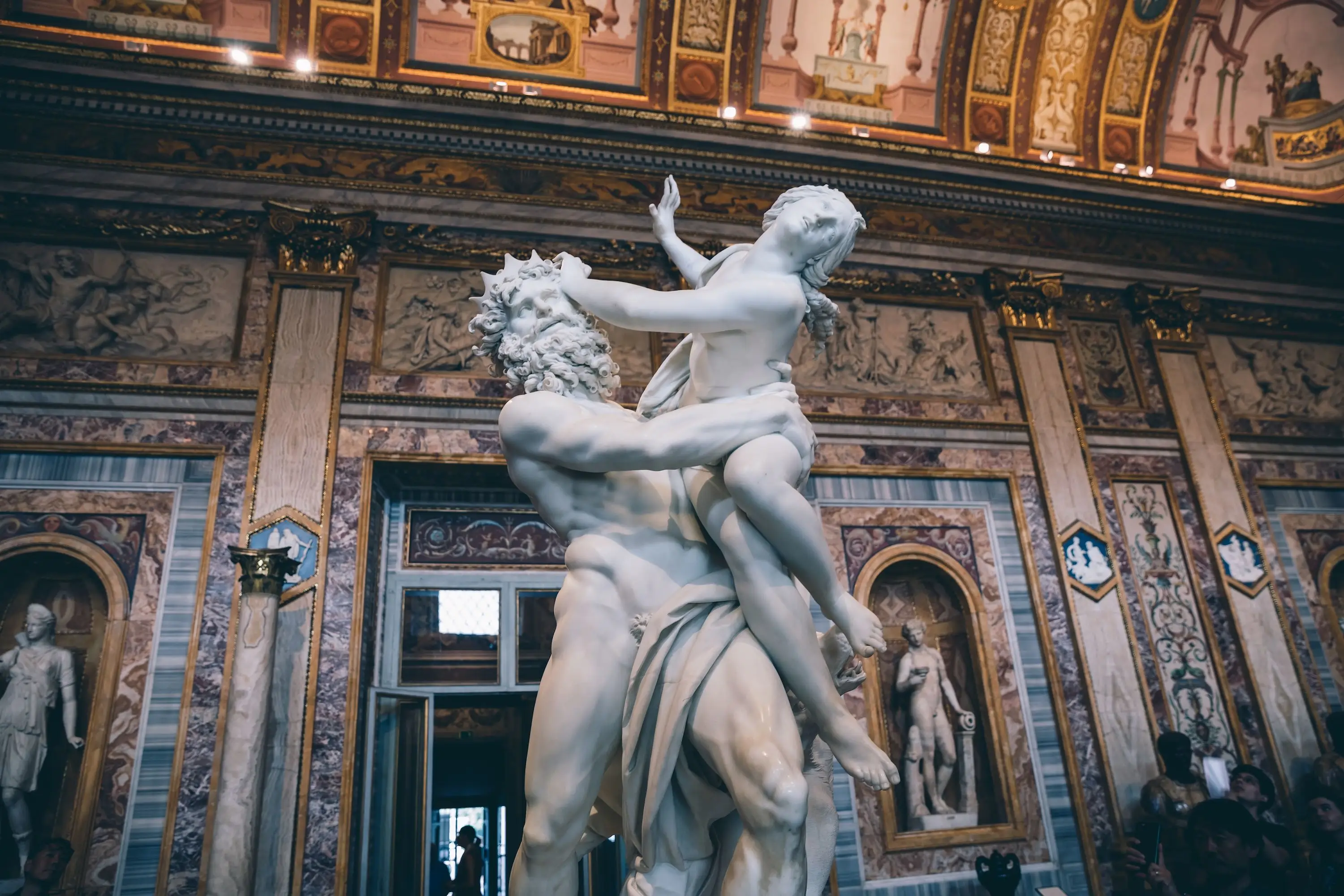
Galleria Borghese
Visit Rome's most famous art gallery outside of the Vatican Museums.
Show More
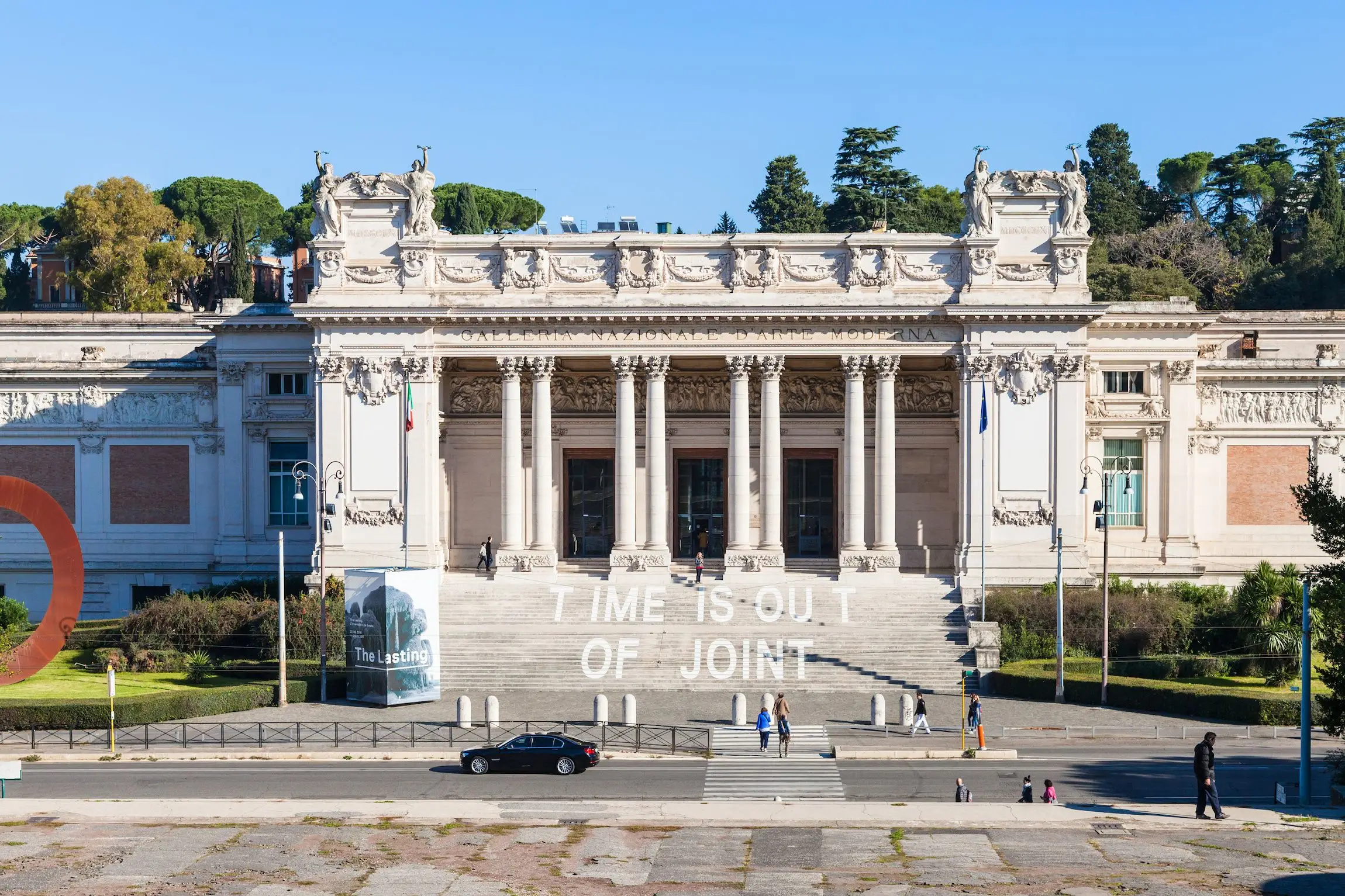
National Gallery of Modern and Contemporary Art
See the most important collection in existence of Italian modern art.
Show More
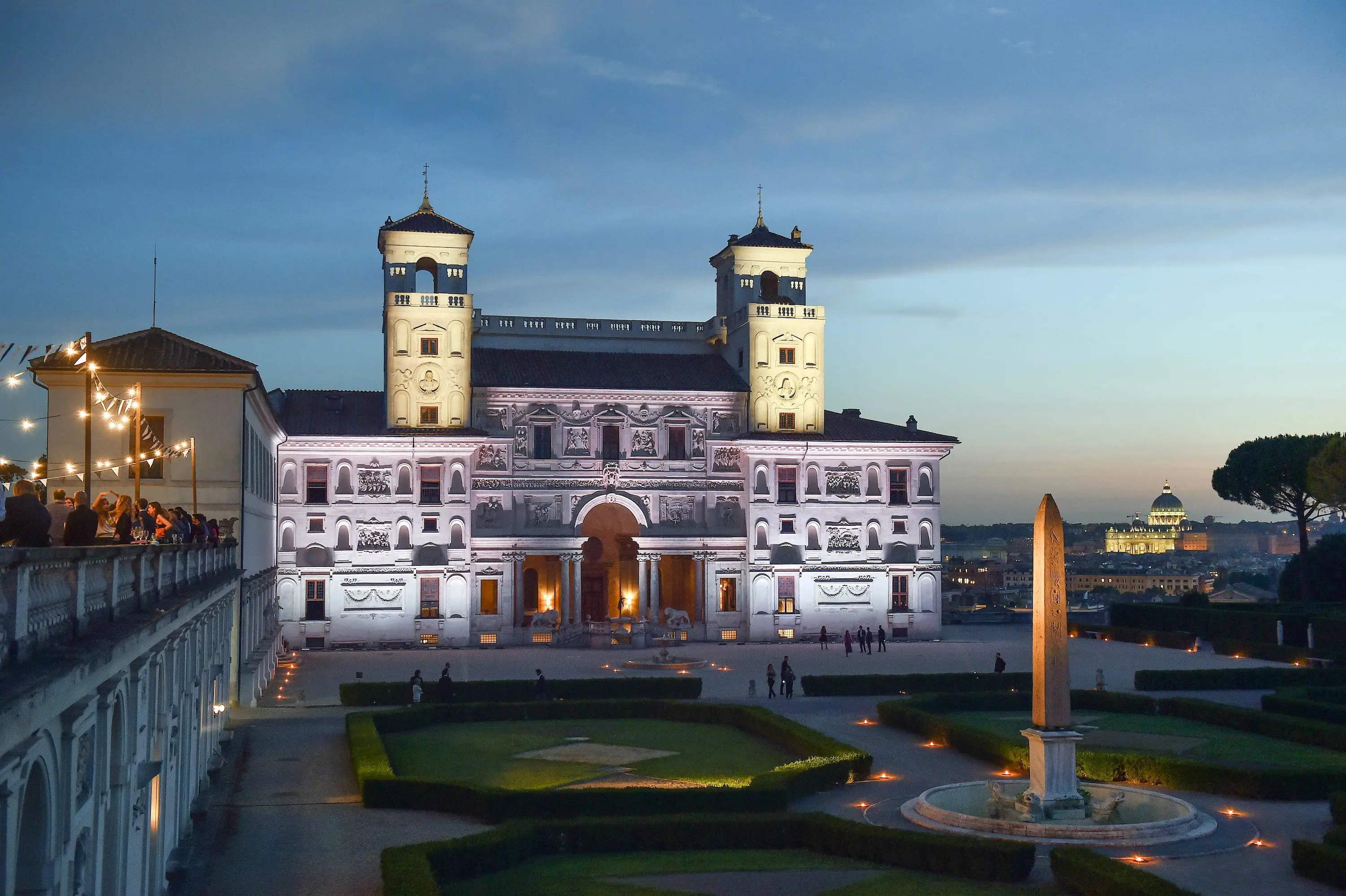
Medici Villa
Take a peak at a 16th-century cardinal's villa that was once considered one of the grandest residences in the city.
Show More

Galleria Borghese
Visit Rome's most famous art gallery outside of the Vatican Museums.
Show More

National Gallery of Modern and Contemporary Art
See the most important collection in existence of Italian modern art.
Show More

Medici Villa
Take a peak at a 16th-century cardinal's villa that was once considered one of the grandest residences in the city.
Show More

Galleria Borghese
Visit Rome's most famous art gallery outside of the Vatican Museums.
Show More
prev
next

Day 12
Rome


Galleria Borghese
 Highlight of Villa Borghese Gardens
Highlight of Villa Borghese GardensVisit Rome's most famous art gallery outside of the Vatican Museums.
The gallery started out as the private family collection of the powerful Borghese family, who poured much of their wealth into the patronage of the best Renaissance-era artists. It contains masterpieces not only by Bernini and Caravaggio, but also Raphael, Rubens, and Titian. Don't miss in particular Caravaggio's David with the Head of Goliath - the head is said to be a self-portrait. It's obligatory to book your visit in advance, you'll need a printable confirmation and a booking number.

National Gallery of Modern and Contemporary Art
 Highlight of Villa Borghese Gardens
Highlight of Villa Borghese GardensSee the most important collection in existence of Italian modern art.
The gallery was founded in 1883, although the current museum building was purpose-built for it in 1911. It displays paintings and sculptures of the nineteenth and twentieth centuries and is the largest such collection in Italy. In addition to Italian artists such as Giorgio de Chirico and Giorgio Morandi, you'll find works from non-Italian artists including Degas, Monet, and Jackson Pollock.

Medici Villa
 Highlight of Villa Borghese Gardens
Highlight of Villa Borghese GardensTake a peak at a 16th-century cardinal's villa that was once considered one of the grandest residences in the city.
Built-in 1564-74 and bought by Cardinal Ferdinando de'Medici in 1576, who further enlarged it, the Medici Villa was considered one of the grandest residences in the city. Galileo was held under house arrest here by the Inquisition in 1630-3. In 1801, the villa was bought by Napoleon and the French Academy was transferred here where it has remained to this day, meaning it is closed to the general public. French students who win the Prix de Rome are sent to study here for periods of six months to two years at the expense of the French government. Well-known scholars include Berlioz, Debussy, and Ingres. It remains one of the most important cultural institutions in Europe and the most beautiful villas to have preserved its garden in the center of Rome.

Galleria Borghese
 Highlight of Villa Borghese Gardens
Highlight of Villa Borghese GardensVisit Rome's most famous art gallery outside of the Vatican Museums.
The gallery started out as the private family collection of the powerful Borghese family, who poured much of their wealth into the patronage of the best Renaissance-era artists. It contains masterpieces not only by Bernini and Caravaggio, but also Raphael, Rubens, and Titian. Don't miss in particular Caravaggio's David with the Head of Goliath - the head is said to be a self-portrait. It's obligatory to book your visit in advance, you'll need a printable confirmation and a booking number.

National Gallery of Modern and Contemporary Art
 Highlight of Villa Borghese Gardens
Highlight of Villa Borghese GardensSee the most important collection in existence of Italian modern art.
The gallery was founded in 1883, although the current museum building was purpose-built for it in 1911. It displays paintings and sculptures of the nineteenth and twentieth centuries and is the largest such collection in Italy. In addition to Italian artists such as Giorgio de Chirico and Giorgio Morandi, you'll find works from non-Italian artists including Degas, Monet, and Jackson Pollock.

Medici Villa
 Highlight of Villa Borghese Gardens
Highlight of Villa Borghese GardensTake a peak at a 16th-century cardinal's villa that was once considered one of the grandest residences in the city.
Built-in 1564-74 and bought by Cardinal Ferdinando de'Medici in 1576, who further enlarged it, the Medici Villa was considered one of the grandest residences in the city. Galileo was held under house arrest here by the Inquisition in 1630-3. In 1801, the villa was bought by Napoleon and the French Academy was transferred here where it has remained to this day, meaning it is closed to the general public. French students who win the Prix de Rome are sent to study here for periods of six months to two years at the expense of the French government. Well-known scholars include Berlioz, Debussy, and Ingres. It remains one of the most important cultural institutions in Europe and the most beautiful villas to have preserved its garden in the center of Rome.

Galleria Borghese
 Highlight of Villa Borghese Gardens
Highlight of Villa Borghese GardensVisit Rome's most famous art gallery outside of the Vatican Museums.
The gallery started out as the private family collection of the powerful Borghese family, who poured much of their wealth into the patronage of the best Renaissance-era artists. It contains masterpieces not only by Bernini and Caravaggio, but also Raphael, Rubens, and Titian. Don't miss in particular Caravaggio's David with the Head of Goliath - the head is said to be a self-portrait. It's obligatory to book your visit in advance, you'll need a printable confirmation and a booking number.
prev
next

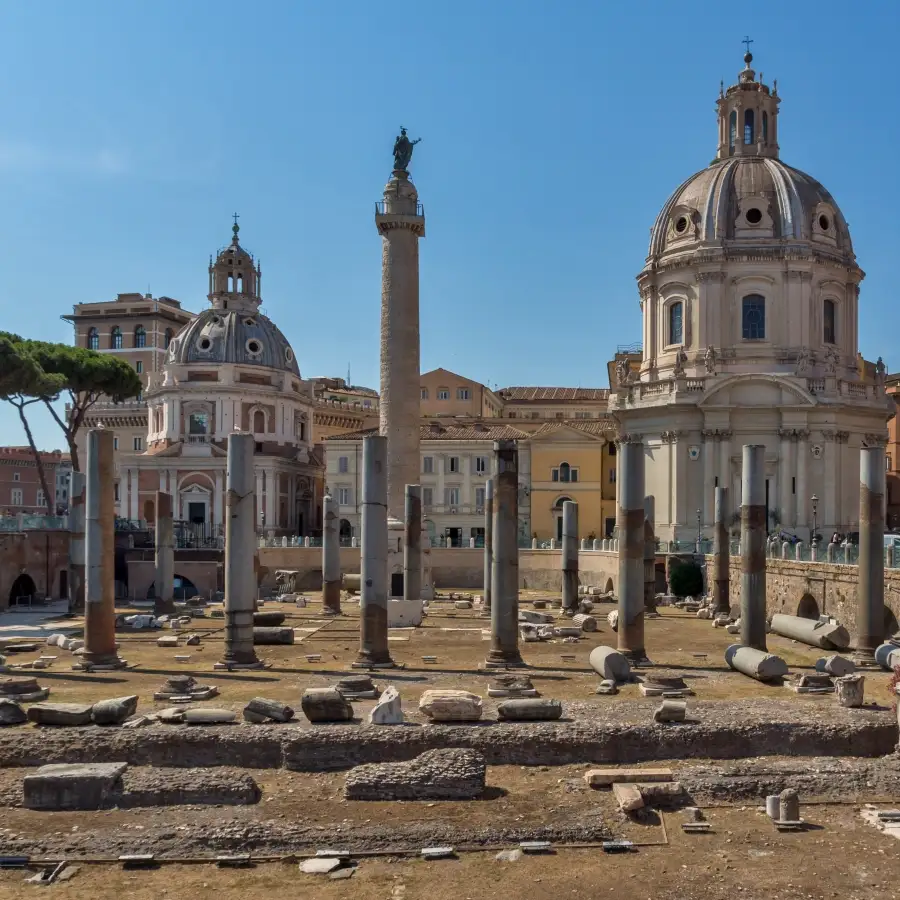
Day 13
Rome
Day 13
Rome



Morning/Mid-Day
Piazza Venezia
The Piazza Venezia is not only the central hub of Rome, but is also located at the foot of the Capitoline Hill, which is the ancient heart of Rome. Thus it was chosen as a fitting space for a memorial to the first king of modern Italy, Victor Emmanuel II, who led the unification of the Italian states in the 1860s. The gigantic monument now overlooks the Piazza Venezia in overwhelming marble glory, standing as an unmissable symbol of Italian unity. The open space and dramatic setting were used to great effect by Mussolini, who staged rallies here. However, the monument is just one of the several sights that can be found around Piazza Venezia, an area often overlooked by tourists who pass from the historic center directly to the Colosseum further down the street. For instance, just below it you'll find Trajan's Forum, containing some of Rome's most notable ruins, and just above it on the Capitoline Hill, an elegant square designed by Michelangelo.
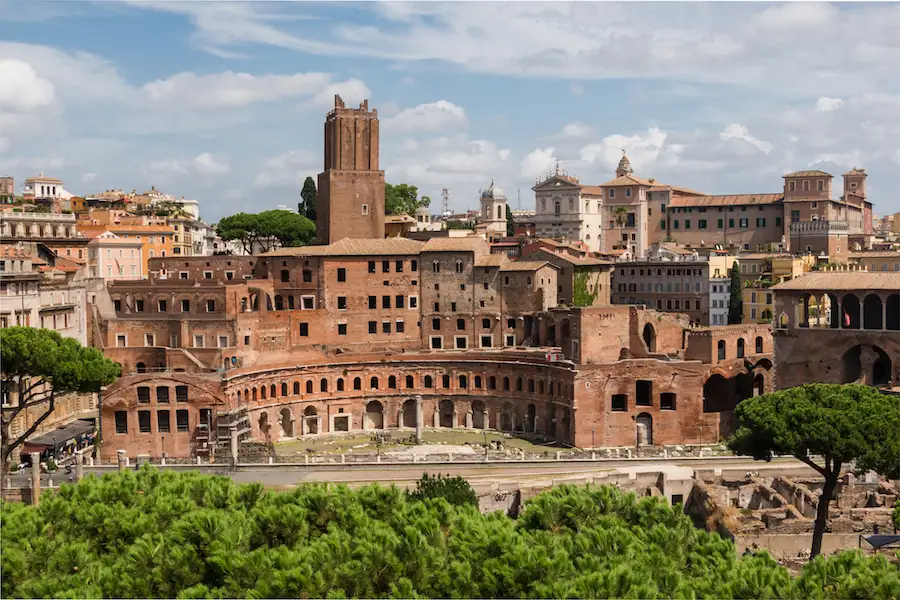
Markets of Trajan
Take a look around the world's first shopping mall.
Show More
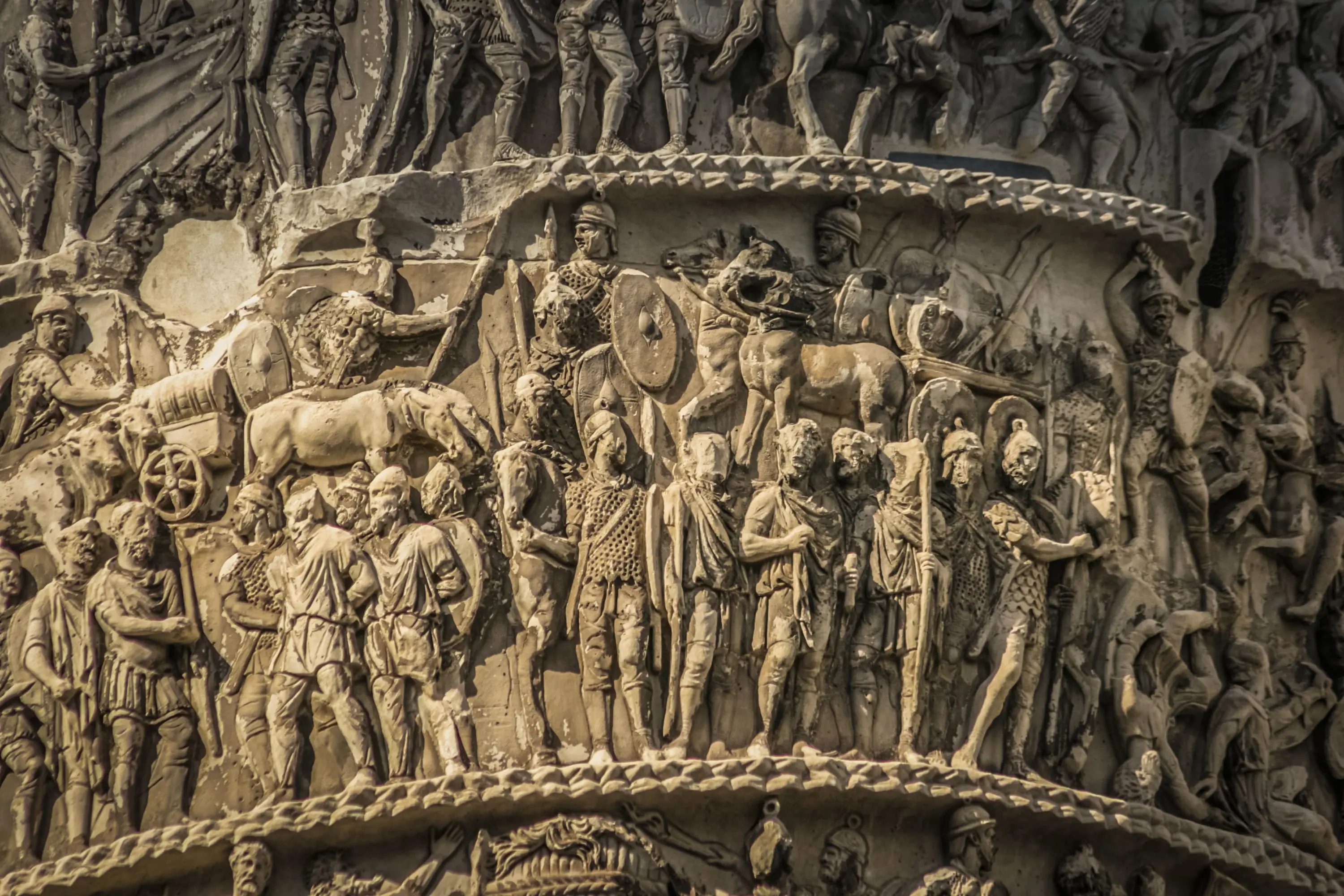
Trajan's Column
Relive a saga of war and conquest on this carved frieze as it winds its way up a 140-foot high ancient column.
Show More
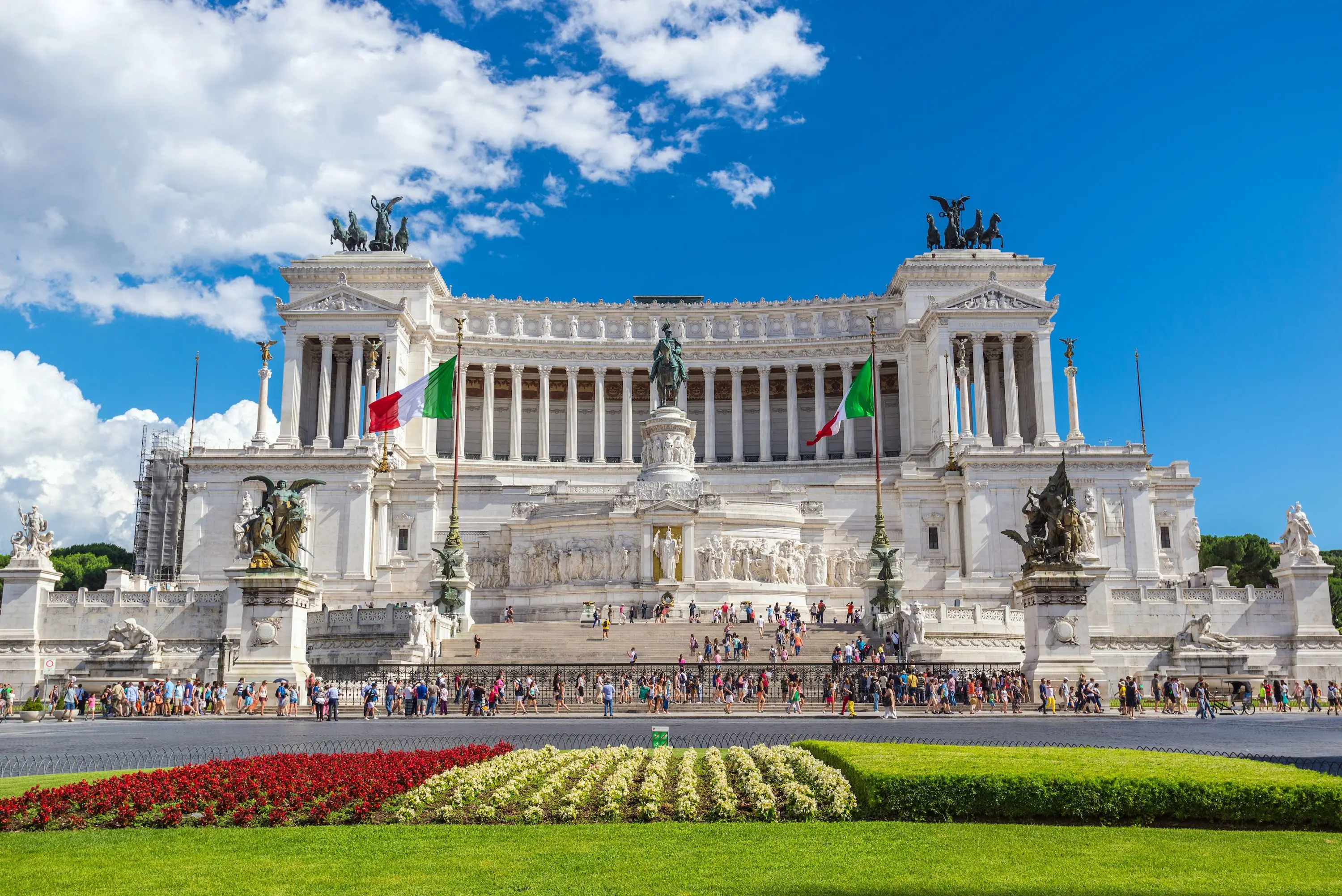
Vittorio Emanuele II Monument
Visit this grand monument and ascend to the roof through an elevator at the back for the wonderful views of the Roman Forum and Colosseum.
Show More
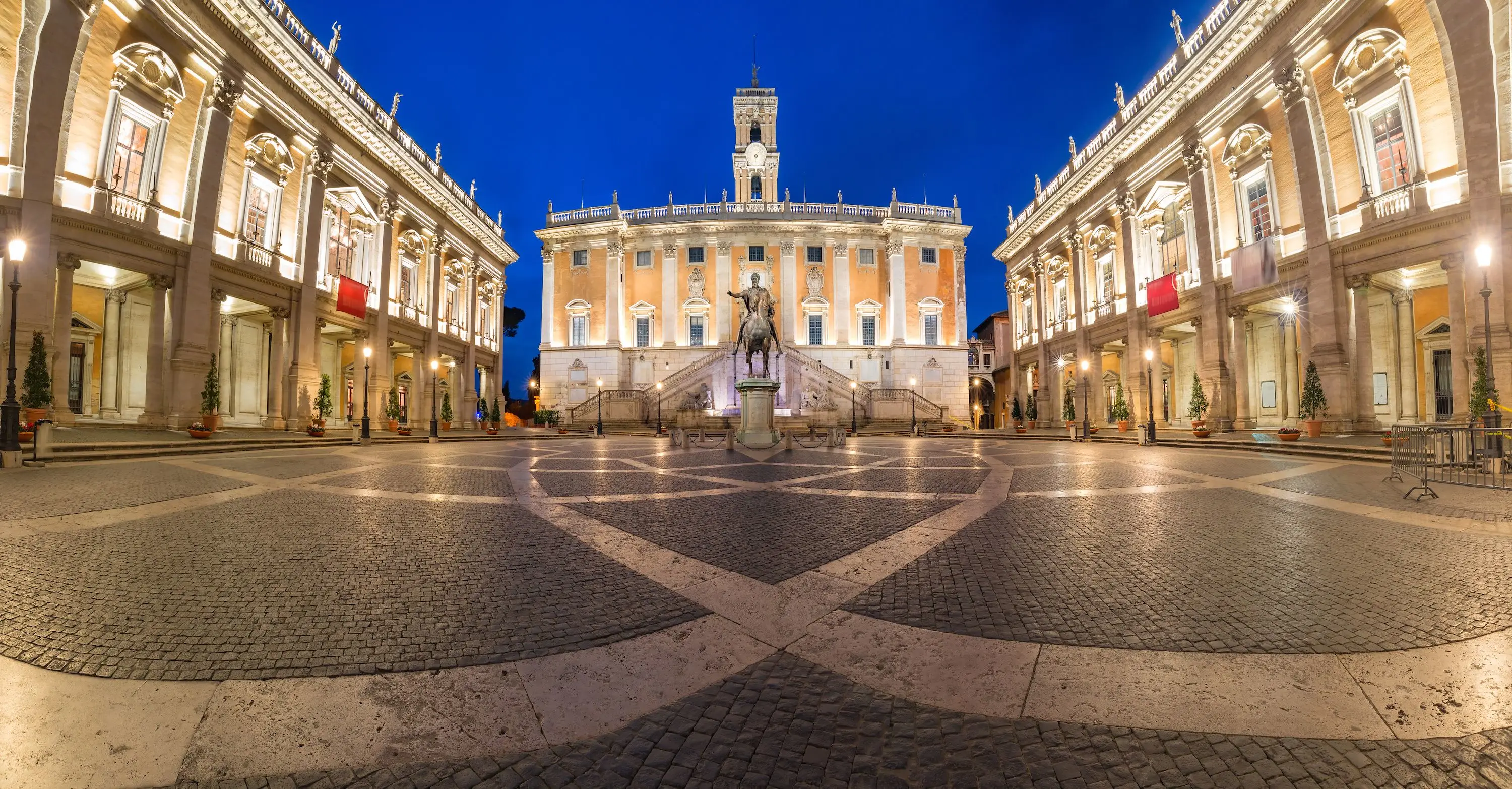
Capitoline Square & Capitoline Museums
See the square Michelangelo designed to mark the spot of Rome's legendary origins.
Show More

Markets of Trajan
Take a look around the world's first shopping mall.
Show More

Trajan's Column
Relive a saga of war and conquest on this carved frieze as it winds its way up a 140-foot high ancient column.
Show More

Vittorio Emanuele II Monument
Visit this grand monument and ascend to the roof through an elevator at the back for the wonderful views of the Roman Forum and Colosseum.
Show More

Capitoline Square & Capitoline Museums
See the square Michelangelo designed to mark the spot of Rome's legendary origins.
Show More
prev
next

Day 13
Rome


Markets of Trajan
 Highlight of Piazza Venezia
Highlight of Piazza VeneziaTake a look around the world's first shopping mall.
Trajan's Forum was the last great forum built in Rome and rivaled the original Forum in scale and grandiosity. However, the only significant structure that remains now is the semicircular ruins of the Trajan Markets, which are often described as the world's first shopping mall. Arcaded passageways led to offices, shops, and apartments, situated in a multi-story structure. It is still possible to visit some of these levels. Within Trajan's Market you will find the Museum of Imperial Fora, one of the best interactive museums covering Ancient Rome. The labeling in English is unsurpassed and the exhibition rooms both in the museum and the rooms of the markets provide a superb introduction to Roman life and the architecture and building methods that were lost for centuries after the fall of the Roman Empire. Two or three hours spent here is time well invested.

Trajan's Column
 Highlight of Piazza Venezia
Highlight of Piazza VeneziaRelive a saga of war and conquest on this carved frieze as it winds its way up a 140-foot high ancient column.
Built in 113 AD out of 18 massive blocks of marble, the column is decorated with exquisitely executed reliefs which spiral up around it. There are over 2,500 carved figures, and the column tells a detailed and highly visual tale of the Emperor Trajan’s Dacian wars. At the top of the column once stood a statue of the victorious Emperor (replaced by St Peter in 1588), and a spiral stone staircase inside led to a platform from which extensive views could be enjoyed over the rooftops of the city. Today the column is visible from the Piazza Venezia without a ticket, but those with a particular interest in Roman history might consider hiring a private guide who can explain the story depicted by the column in more detail.

Vittorio Emanuele II Monument
 Highlight of Piazza Venezia
Highlight of Piazza VeneziaVisit this grand monument and ascend to the roof through an elevator at the back for the wonderful views of the Roman Forum and Colosseum.
Standing grand and mighty on Capitoline Hill overlooking Piazza Venezia, the monumental marble temple honouring Italy's first king Vittorio Emanuele II is a sight often overlooked by tourists. The impressive wedding cake-like building is home to one of the best views in Rome. Ascend to its rooftop and you can enjoy amazing views over the Roman Forum and Colosseum. The monument is also the sight of the Altar of the Fatherland (Altare della Patria), which includes an altar to the goddess Rome, and a shrine to the Italian Unknown Soldier, thus making the monument a sort of secular temple dedicated to the country. However, it's unlikely the relatively modest and unassuming Vittorio would have appreciated this massive monument built to his legacy. Inaugurated in 1911 to symbolize the achievement of Italian unity, it irrevocably changed the aspect of the city, throwing out of scale the Capitoline hill itself and causing indiscriminate damage. Familiarly known as ‘Mussolini’s typewriter’ (it was finished during his regime in 1937), it is thought by some locals to be a colossal monstrosity, although for others its symbolic importance makes it a place of reverence, regardless of any architectural criticism.

Capitoline Square & Capitoline Museums
 Highlight of Piazza Venezia
Highlight of Piazza VeneziaSee the square Michelangelo designed to mark the spot of Rome's legendary origins.
This square at the top of the Capitoline Hill, Piazza del Campidoglio, is a lovely piece of town planning designed by Michelangelo. It is surrounded on three sides by stately palaces and an open-end featuring a balustrade. This is the historical center of ancient Rome, and to reflect this fact, Pope Paul III ordered that the famous gilded bronze equestrian statue of Marcus Aurelius be moved here from the Lateran hill. Off of one corner of the square you will find a reproduction of the famous Lupa Capitolina, that is, the statue of the she-wolf that suckled the legendary founders of Rome, Romulus and Remus. Wander just a bit further and you will be rewarded with an amazing view over the Forum. You'll also find the Capitoline Museums in one of the 15th century palaces fronting the square. These are some of the oldest collections in Rome, containing Classical Roman, Greek, and Egyptian sculptures, as well as Renaissance art.

Markets of Trajan
 Highlight of Piazza Venezia
Highlight of Piazza VeneziaTake a look around the world's first shopping mall.
Trajan's Forum was the last great forum built in Rome and rivaled the original Forum in scale and grandiosity. However, the only significant structure that remains now is the semicircular ruins of the Trajan Markets, which are often described as the world's first shopping mall. Arcaded passageways led to offices, shops, and apartments, situated in a multi-story structure. It is still possible to visit some of these levels. Within Trajan's Market you will find the Museum of Imperial Fora, one of the best interactive museums covering Ancient Rome. The labeling in English is unsurpassed and the exhibition rooms both in the museum and the rooms of the markets provide a superb introduction to Roman life and the architecture and building methods that were lost for centuries after the fall of the Roman Empire. Two or three hours spent here is time well invested.

Trajan's Column
 Highlight of Piazza Venezia
Highlight of Piazza VeneziaRelive a saga of war and conquest on this carved frieze as it winds its way up a 140-foot high ancient column.
Built in 113 AD out of 18 massive blocks of marble, the column is decorated with exquisitely executed reliefs which spiral up around it. There are over 2,500 carved figures, and the column tells a detailed and highly visual tale of the Emperor Trajan’s Dacian wars. At the top of the column once stood a statue of the victorious Emperor (replaced by St Peter in 1588), and a spiral stone staircase inside led to a platform from which extensive views could be enjoyed over the rooftops of the city. Today the column is visible from the Piazza Venezia without a ticket, but those with a particular interest in Roman history might consider hiring a private guide who can explain the story depicted by the column in more detail.

Vittorio Emanuele II Monument
 Highlight of Piazza Venezia
Highlight of Piazza VeneziaVisit this grand monument and ascend to the roof through an elevator at the back for the wonderful views of the Roman Forum and Colosseum.
Standing grand and mighty on Capitoline Hill overlooking Piazza Venezia, the monumental marble temple honouring Italy's first king Vittorio Emanuele II is a sight often overlooked by tourists. The impressive wedding cake-like building is home to one of the best views in Rome. Ascend to its rooftop and you can enjoy amazing views over the Roman Forum and Colosseum. The monument is also the sight of the Altar of the Fatherland (Altare della Patria), which includes an altar to the goddess Rome, and a shrine to the Italian Unknown Soldier, thus making the monument a sort of secular temple dedicated to the country. However, it's unlikely the relatively modest and unassuming Vittorio would have appreciated this massive monument built to his legacy. Inaugurated in 1911 to symbolize the achievement of Italian unity, it irrevocably changed the aspect of the city, throwing out of scale the Capitoline hill itself and causing indiscriminate damage. Familiarly known as ‘Mussolini’s typewriter’ (it was finished during his regime in 1937), it is thought by some locals to be a colossal monstrosity, although for others its symbolic importance makes it a place of reverence, regardless of any architectural criticism.

Capitoline Square & Capitoline Museums
 Highlight of Piazza Venezia
Highlight of Piazza VeneziaSee the square Michelangelo designed to mark the spot of Rome's legendary origins.
This square at the top of the Capitoline Hill, Piazza del Campidoglio, is a lovely piece of town planning designed by Michelangelo. It is surrounded on three sides by stately palaces and an open-end featuring a balustrade. This is the historical center of ancient Rome, and to reflect this fact, Pope Paul III ordered that the famous gilded bronze equestrian statue of Marcus Aurelius be moved here from the Lateran hill. Off of one corner of the square you will find a reproduction of the famous Lupa Capitolina, that is, the statue of the she-wolf that suckled the legendary founders of Rome, Romulus and Remus. Wander just a bit further and you will be rewarded with an amazing view over the Forum. You'll also find the Capitoline Museums in one of the 15th century palaces fronting the square. These are some of the oldest collections in Rome, containing Classical Roman, Greek, and Egyptian sculptures, as well as Renaissance art.
prev
next


Day 14
Rome
Day 14
Rome



Morning/Mid-Day
Vatican City
Rome is unique in the world in that it contains an independent country within its city limits - the Vatican City, from where the Pope administers the Catholic Church. The symbolic center of Catholicism is St Peter's Basilica, the second-largest Catholic church in the world and among the most beautiful. The Vatican Museum contains one of the greatest collections of art in existence, including Michelangelo's jaw-dropping Sistine Chapel. The popes had a bigger influence on Rome than just the collection of art. The Pope's title is actually Bishop of Rome, and popes administed the city for centuries, shaping its architecture & public spaces. Rome was re-built to be an example of urban beauty, and the Vatican was meant to be the showcase within the showcase. Their success is evident from the throngs of visitors who flock here even today.
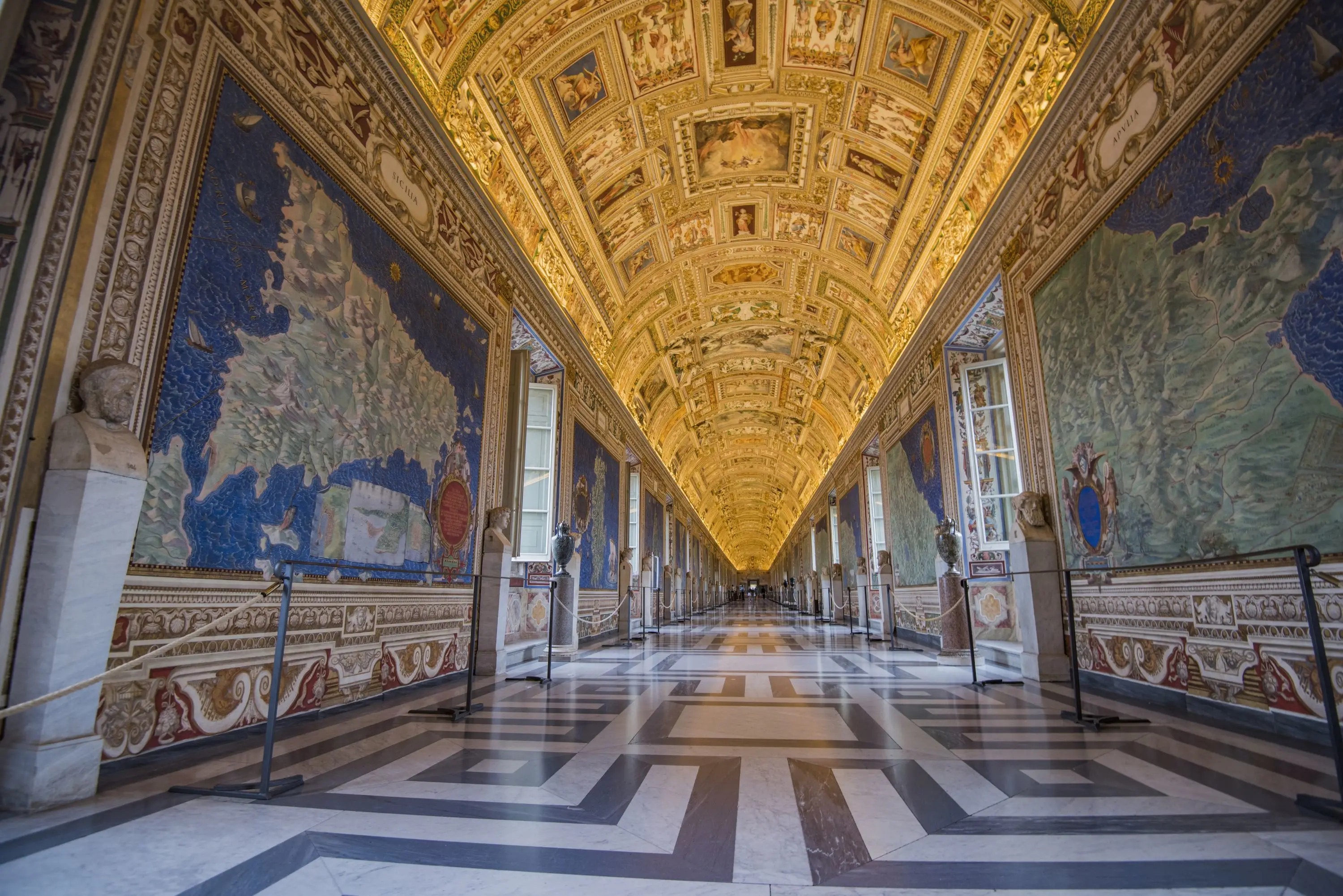
Vatican Museums
Book early if you want to see the Vatican Museum's monumental works of art from the greatest Italian artists of the Renaissance.
Show More
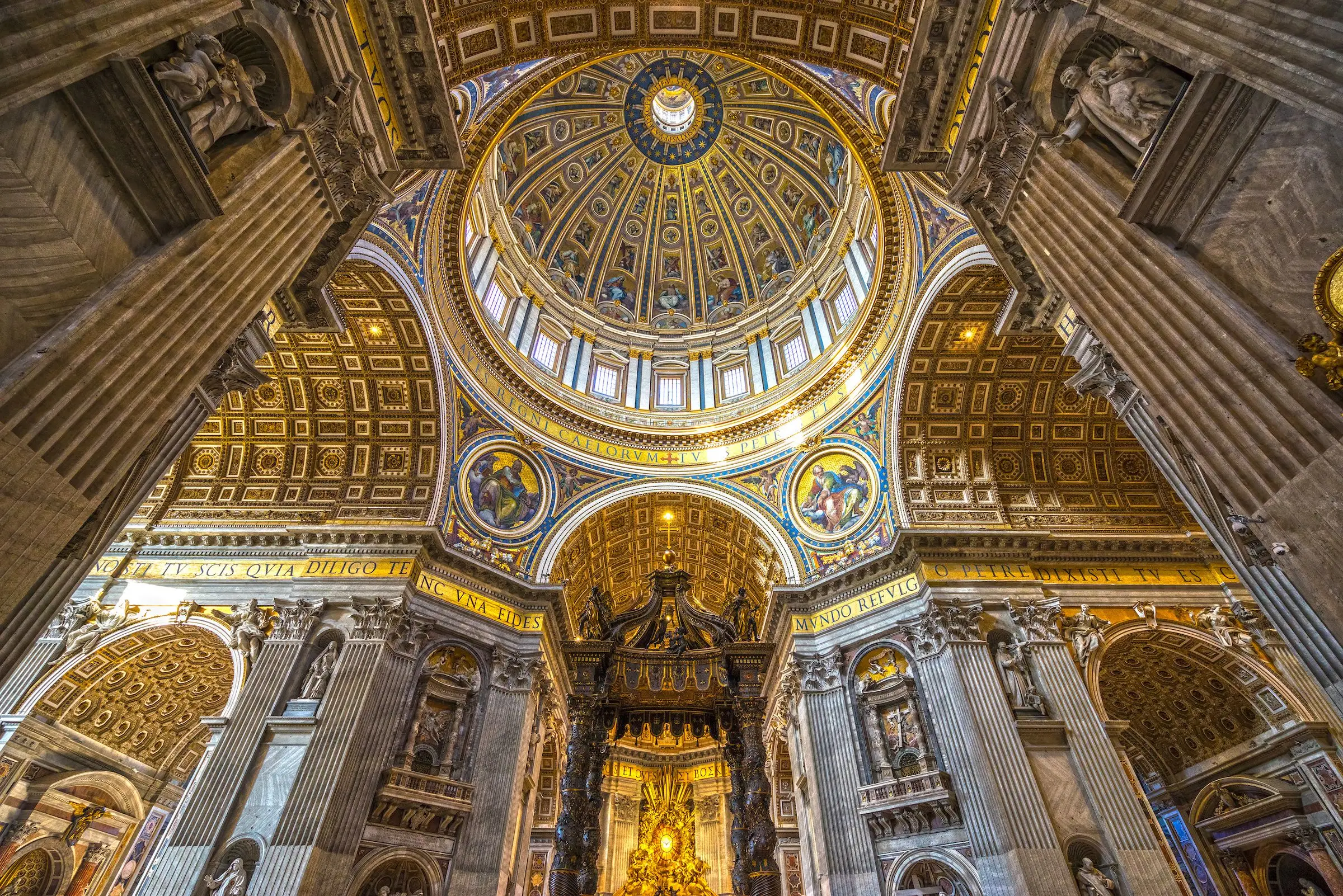
St Peter’s Basilica
Explore the gigantic and incredibly beautiful church known as "the greatest of all churches of Christendom".
Show More

Vatican Gardens
Escape the crowds in this oasis of green hidden behind the walls of the Vatican.
Show More
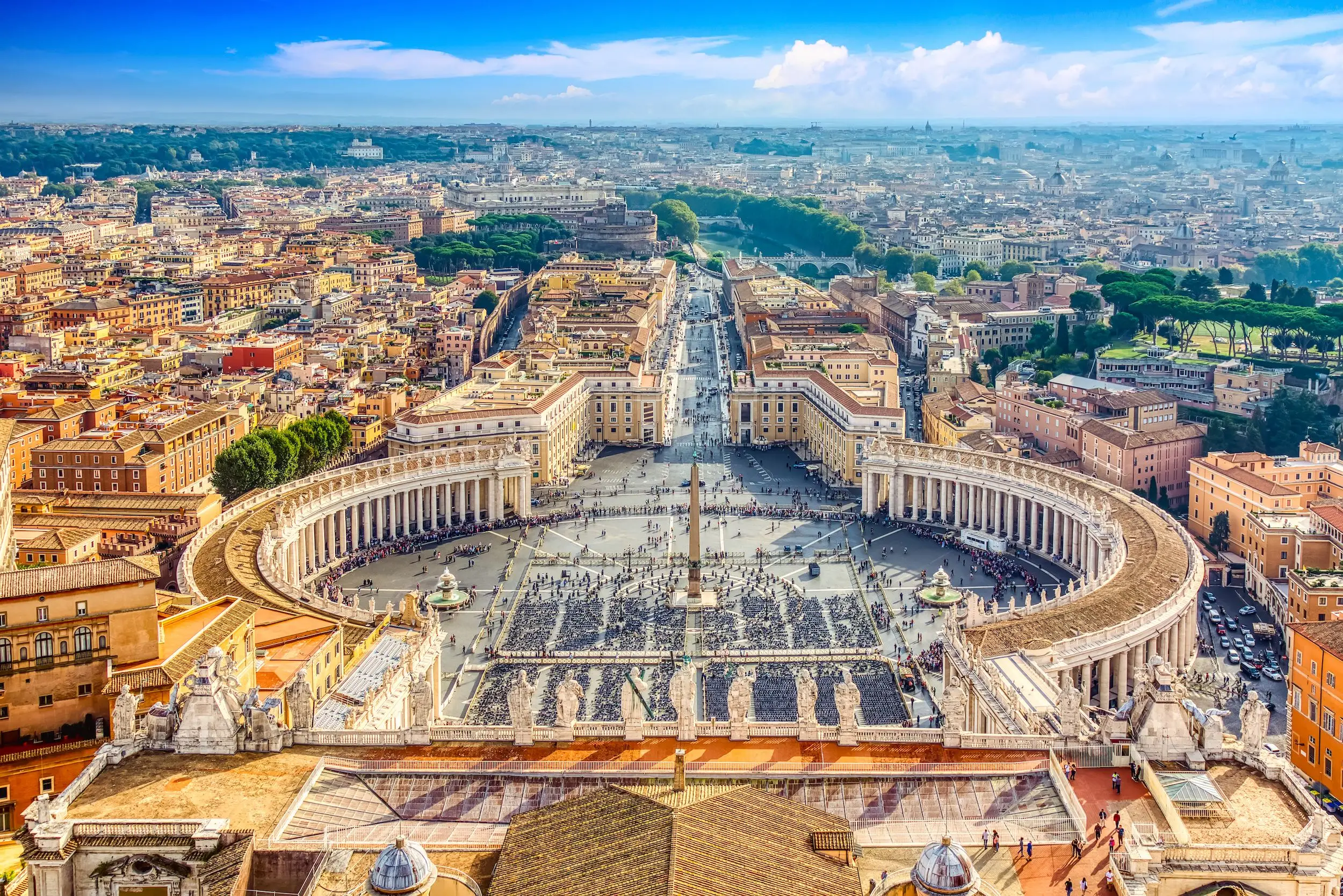
St Peter's Square
Stand in the middle of this famous square in which the faithful gather to hear the Pope give audiences and celebrate mass.
Show More
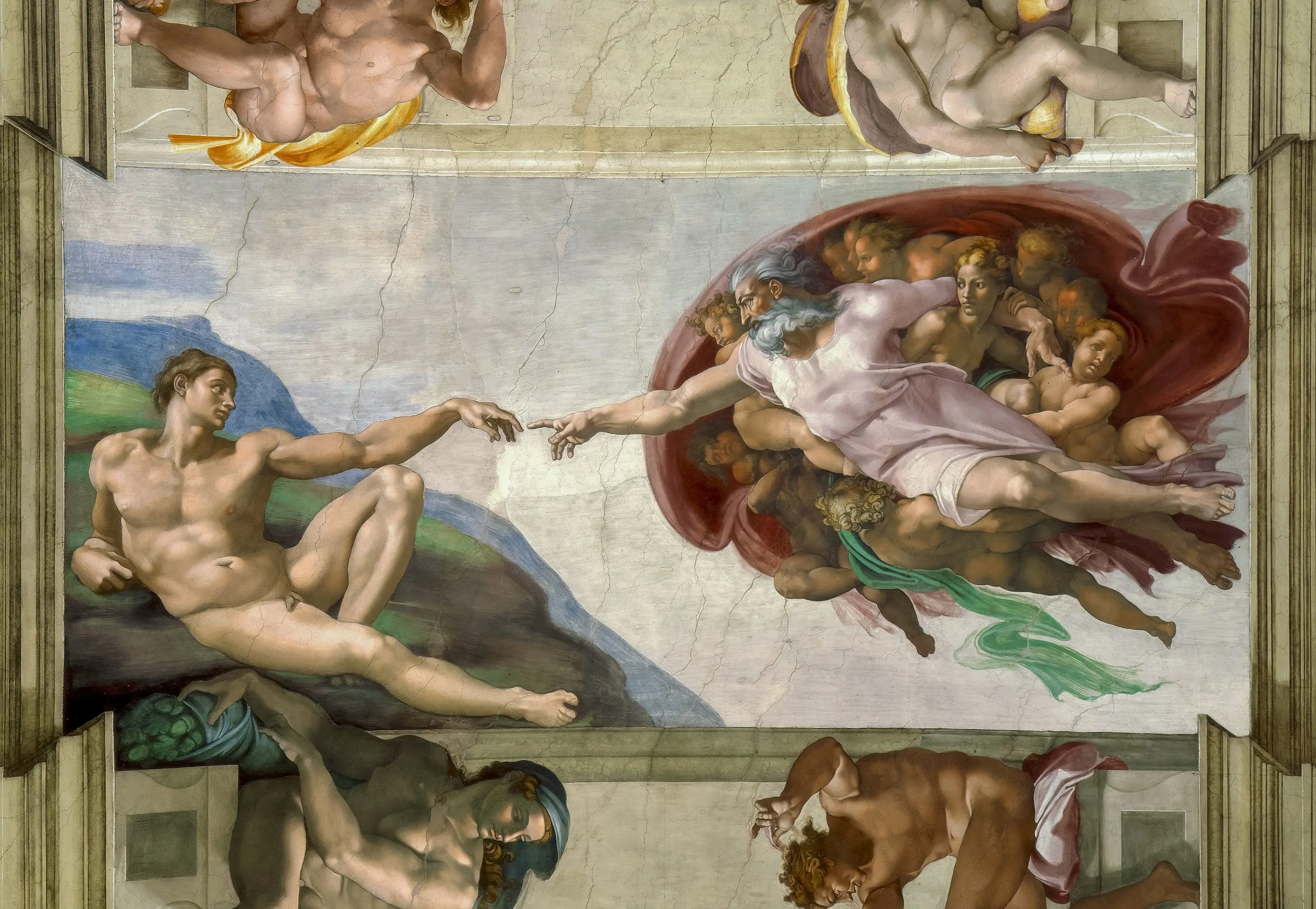
Sistine Chapel
Gaze up at the world's most famous ceiling, the masterpiece of Michelangelo.
Show More

Vatican Museums
Book early if you want to see the Vatican Museum's monumental works of art from the greatest Italian artists of the Renaissance.
Show More

St Peter’s Basilica
Explore the gigantic and incredibly beautiful church known as "the greatest of all churches of Christendom".
Show More

Vatican Gardens
Escape the crowds in this oasis of green hidden behind the walls of the Vatican.
Show More

St Peter's Square
Stand in the middle of this famous square in which the faithful gather to hear the Pope give audiences and celebrate mass.
Show More

Sistine Chapel
Gaze up at the world's most famous ceiling, the masterpiece of Michelangelo.
Show More

Vatican Museums
Book early if you want to see the Vatican Museum's monumental works of art from the greatest Italian artists of the Renaissance.
Show More
prev
next

Day 14
Rome


Vatican Museums
 Highlight of Vatican City
Highlight of Vatican CityBook early if you want to see the Vatican Museum's monumental works of art from the greatest Italian artists of the Renaissance.
The Vatican Museum is actually 26 different museums, which include not only exhibitions but chapels, apartments, and other rooms of the Vatican palace, covering a huge range of fine and applied arts patronized by the popes. There's also an outstanding collection of ancient antiquities (including even the Emperor Nero's red stone bathtub), a gallery of hand-painted maps, and whole rooms turned into works of art. In addition to ancient and medieval works of art, you'll see masterpieces by the "who's who" of the Italian Renaissance, including Raphael, Leonardo da Vinci, Titian, and Caravaggio. Other highlights include panels by the brilliant monk-artist Fra Angelico, works from the Venetian school, including Vavarini, and much, much more. Booking in advance is highly recommended as otherwise you can wait for hours or not even be able to get in at all.

St Peter’s Basilica
 Highlight of Vatican City
Highlight of Vatican CityExplore the gigantic and incredibly beautiful church known as "the greatest of all churches of Christendom".
The basilica is one of the chief pilgrimage sites in the Christian world, and one of the most popular tourist destinations in Rome. The basilica is the symbolic center of the church not only because the Pope frequently celebrates Mass there, but because it is believed that the apostle St. Peter is buried beneath it. Catholics consider Peter as the first Bishop of Rome and "the rock" upon which the Catholic Church was built, in accordance with Christ's instructions. Inside you can admire sculptures by Bernini as well as Michelangelo's famous sculpture of the Virgin Mary holding the crucified Jesus, known as The Pietà. The church's elaborate and impressive golden interior is a sight to behold. Other sights include St Peter's tomb, the Papal crypts in the necropolis under the basilica, as well as the dome, which rewards visitors with views over Rome. Entry is free, but queues to visit the Basilica can be lengthy, so it is highly advised to either get there early or to purchase a skip the line entrance. The dome is also paid entry.

Vatican Gardens
 Highlight of Vatican City
Highlight of Vatican CityEscape the crowds in this oasis of green hidden behind the walls of the Vatican.
Accessible only via a guided tour, the gardens are definitely worth a visit. Just as the Popes have for hundreds of years, you can stroll the gardens and relax amidst the greenery, while taking in the perfect view of St. Peter's.

St Peter's Square
 Highlight of Vatican City
Highlight of Vatican CityStand in the middle of this famous square in which the faithful gather to hear the Pope give audiences and celebrate mass.
As one of the most superb conceptions of its kind in civic architecture, St Peter’s Square is the masterpiece of Gian Lorenzo Bernini and makes a wonderful approach to one of the world’s most magnificent churches, St Peter's Basilica. An oval rather than an actual square, the piazza, laid out in 1656-67, is partially enclosed by two semi-circular colonnades on which stand 96 statues of saints and martyrs. At the center of the oval stands an 84-foot (26m) tall Egyptian obelisk of red granite.

Sistine Chapel
 Highlight of Vatican City
Highlight of Vatican CityGaze up at the world's most famous ceiling, the masterpiece of Michelangelo.
This famous chapel inside the Vatican Museums is best known for Michelangelo's 16th-century painted ceiling of "The Creation of Adam" and "The Last Judgement" fresco that covers the whole altar wall of the chapel. The jaw-dropping sight is not to be missed, considered one of the top highlights of visiting the Vatican Museums and one of the top artistic wonders of the world.

Vatican Museums
 Highlight of Vatican City
Highlight of Vatican CityBook early if you want to see the Vatican Museum's monumental works of art from the greatest Italian artists of the Renaissance.
The Vatican Museum is actually 26 different museums, which include not only exhibitions but chapels, apartments, and other rooms of the Vatican palace, covering a huge range of fine and applied arts patronized by the popes. There's also an outstanding collection of ancient antiquities (including even the Emperor Nero's red stone bathtub), a gallery of hand-painted maps, and whole rooms turned into works of art. In addition to ancient and medieval works of art, you'll see masterpieces by the "who's who" of the Italian Renaissance, including Raphael, Leonardo da Vinci, Titian, and Caravaggio. Other highlights include panels by the brilliant monk-artist Fra Angelico, works from the Venetian school, including Vavarini, and much, much more. Booking in advance is highly recommended as otherwise you can wait for hours or not even be able to get in at all.

St Peter’s Basilica
 Highlight of Vatican City
Highlight of Vatican CityExplore the gigantic and incredibly beautiful church known as "the greatest of all churches of Christendom".
The basilica is one of the chief pilgrimage sites in the Christian world, and one of the most popular tourist destinations in Rome. The basilica is the symbolic center of the church not only because the Pope frequently celebrates Mass there, but because it is believed that the apostle St. Peter is buried beneath it. Catholics consider Peter as the first Bishop of Rome and "the rock" upon which the Catholic Church was built, in accordance with Christ's instructions. Inside you can admire sculptures by Bernini as well as Michelangelo's famous sculpture of the Virgin Mary holding the crucified Jesus, known as The Pietà. The church's elaborate and impressive golden interior is a sight to behold. Other sights include St Peter's tomb, the Papal crypts in the necropolis under the basilica, as well as the dome, which rewards visitors with views over Rome. Entry is free, but queues to visit the Basilica can be lengthy, so it is highly advised to either get there early or to purchase a skip the line entrance. The dome is also paid entry.

Vatican Gardens
 Highlight of Vatican City
Highlight of Vatican CityEscape the crowds in this oasis of green hidden behind the walls of the Vatican.
Accessible only via a guided tour, the gardens are definitely worth a visit. Just as the Popes have for hundreds of years, you can stroll the gardens and relax amidst the greenery, while taking in the perfect view of St. Peter's.

St Peter's Square
 Highlight of Vatican City
Highlight of Vatican CityStand in the middle of this famous square in which the faithful gather to hear the Pope give audiences and celebrate mass.
As one of the most superb conceptions of its kind in civic architecture, St Peter’s Square is the masterpiece of Gian Lorenzo Bernini and makes a wonderful approach to one of the world’s most magnificent churches, St Peter's Basilica. An oval rather than an actual square, the piazza, laid out in 1656-67, is partially enclosed by two semi-circular colonnades on which stand 96 statues of saints and martyrs. At the center of the oval stands an 84-foot (26m) tall Egyptian obelisk of red granite.

Sistine Chapel
 Highlight of Vatican City
Highlight of Vatican CityGaze up at the world's most famous ceiling, the masterpiece of Michelangelo.
This famous chapel inside the Vatican Museums is best known for Michelangelo's 16th-century painted ceiling of "The Creation of Adam" and "The Last Judgement" fresco that covers the whole altar wall of the chapel. The jaw-dropping sight is not to be missed, considered one of the top highlights of visiting the Vatican Museums and one of the top artistic wonders of the world.

Vatican Museums
 Highlight of Vatican City
Highlight of Vatican CityBook early if you want to see the Vatican Museum's monumental works of art from the greatest Italian artists of the Renaissance.
The Vatican Museum is actually 26 different museums, which include not only exhibitions but chapels, apartments, and other rooms of the Vatican palace, covering a huge range of fine and applied arts patronized by the popes. There's also an outstanding collection of ancient antiquities (including even the Emperor Nero's red stone bathtub), a gallery of hand-painted maps, and whole rooms turned into works of art. In addition to ancient and medieval works of art, you'll see masterpieces by the "who's who" of the Italian Renaissance, including Raphael, Leonardo da Vinci, Titian, and Caravaggio. Other highlights include panels by the brilliant monk-artist Fra Angelico, works from the Venetian school, including Vavarini, and much, much more. Booking in advance is highly recommended as otherwise you can wait for hours or not even be able to get in at all.
prev
next


Day 15
Depart Rome
Day 15
Depart Rome

To Be Determined
Private Transfer to Rome Fiumicino or Ciampino Airport
A car service will pick you up from your hotel and take you directly to Rome Fiumicino Airport. This is a private transfer for you and your travel party. You do not need to pay the driver as the cost of the private transfer is included in your itinerary. IMPORTANT NOTE: Please be aware the car service can fit up to 1 checked item of luggage and 1 personal item per person, such as a purse or small backpack. If you think you will have more baggage, please inform your travel consultant as this may result in an additional fee.

Day 15
Depart Rome


What's Included In Southern European Treasures Trip

Pre-Paid Tours and Activities:
- Introduction to Lisbon Tour: Bairro Alto, Chiado, and Baixa
- Guided Tour of the Highlights of Seville including the Royal Alcazar
- Guided Excursion to Ronda, Andalusia's Cliffside Jewel
- Medieval & Modernist, the Highlights of Barcelona Tour
- Exploring the Gothic Quarter in the footsteps of Picasso
- Heart of the Empire - Private Tour of Ancient Rome & the Colosseum
- City Cards for Rome, Barcelona, and Lisbon, including discounts to many popular attractions

Pre-Paid Transportation:
- 2nd Class Train Tickets from Sevilla Santa Justa to Madrid-Puerta de Atocha
- 2nd Class Train Tickets from Madrid-Puerta de Atocha to Barcelona Sants
- Public Transport Tickets for Rome, Barcelona, and Lisbon
- Private Transfer from Rome Fiumicino to Hotel
- Private Transfer to Rome Fiumicino or Ciampino Airport

Accommodation:
- 3 nights at a hotel of your choice in Lisbon
- 3 nights at a hotel of your choice in Seville
- 4 nights at a hotel of your choice in Barcelona
- 4 nights at a hotel of your choice in Rome

Go Real Travel Mobile App:
- Itinerary Plan & Reservations Info
- Points of Interest
- Detailed Travel Information
- Maps & Directions
Other Trips You May Like

10 Days
From$2799USD
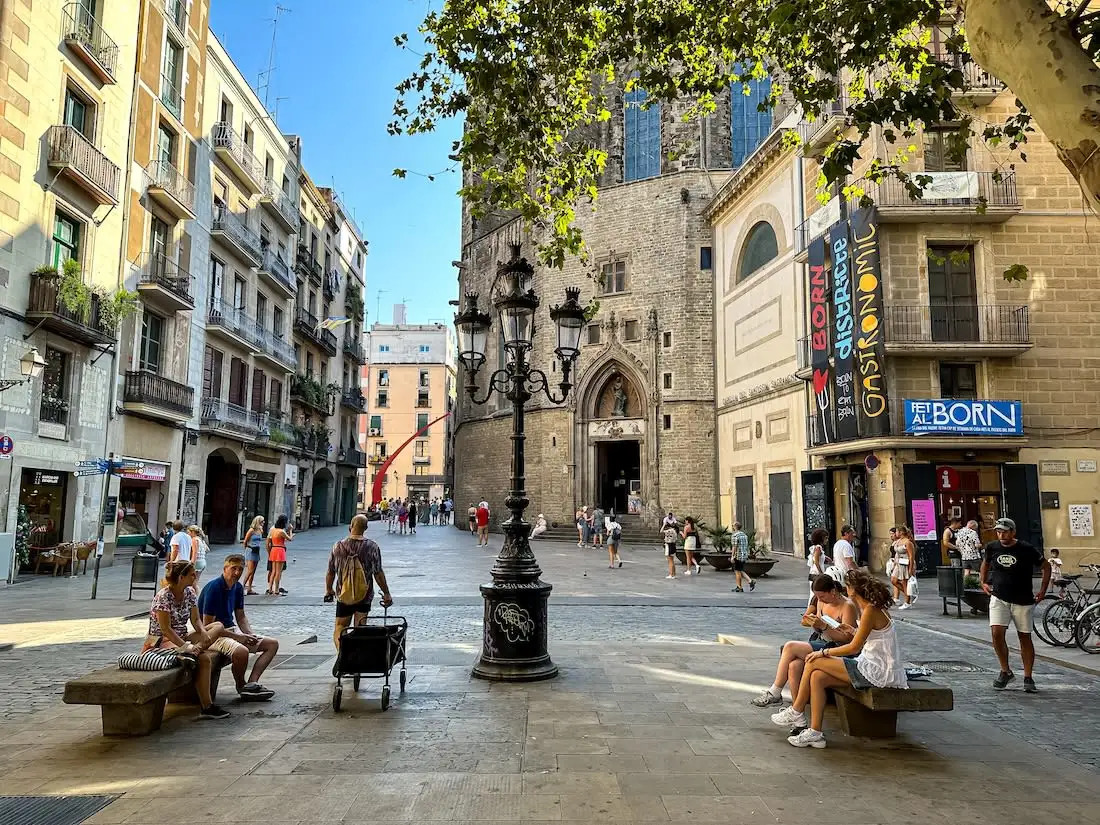
14 Days
From$3679USD
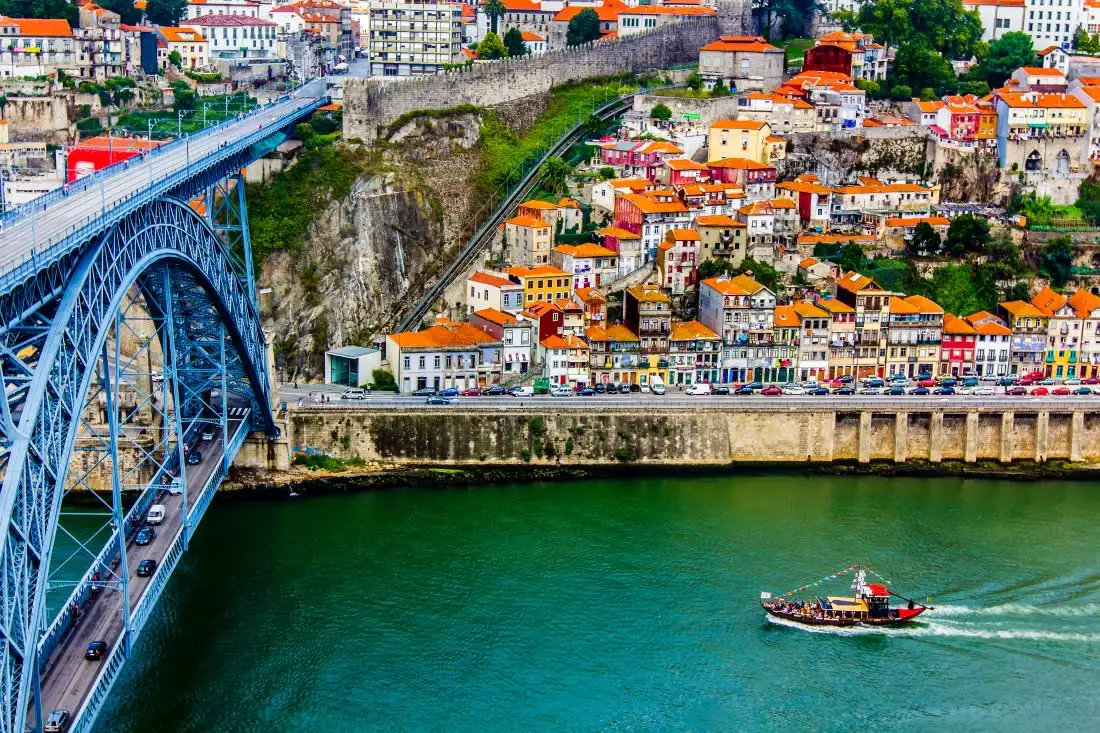
15 Days
From$3832USD

5 Days
From$1399USD
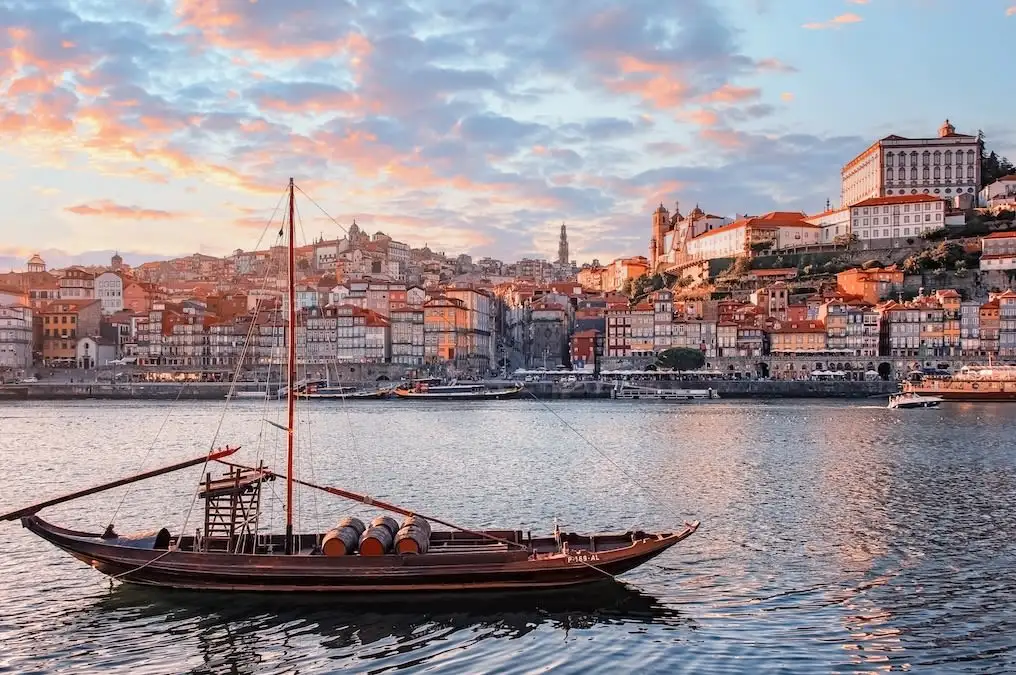
21 Days
From$4999USD
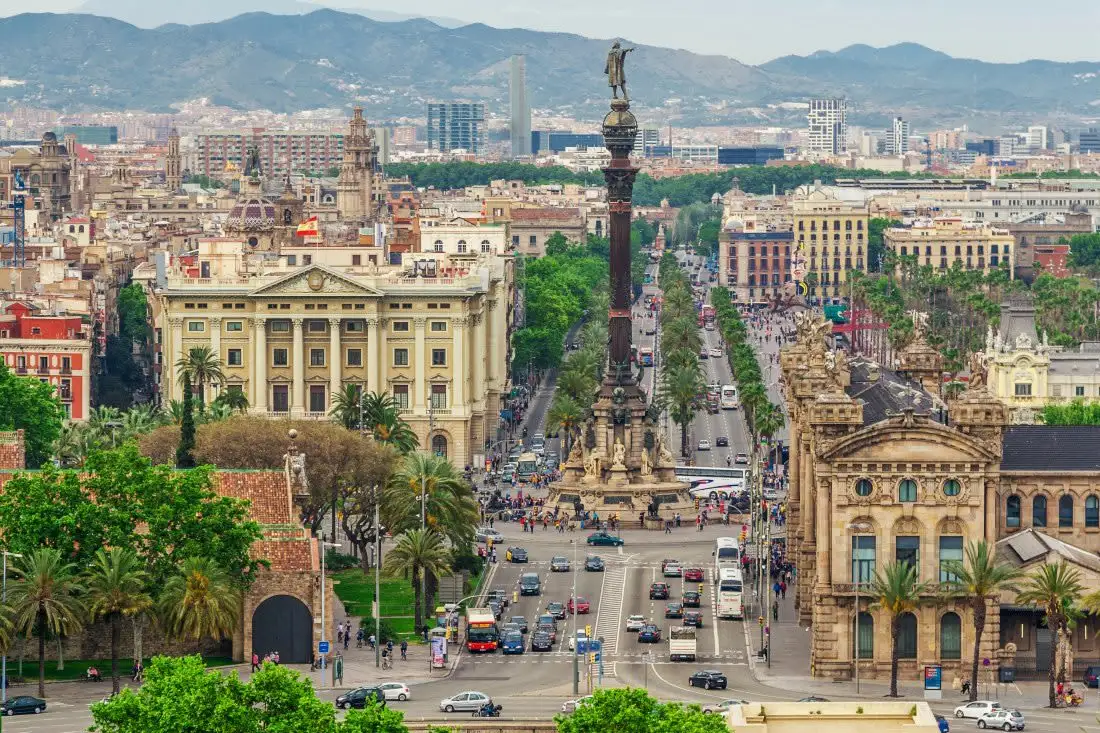
7 Days
From$1998USD
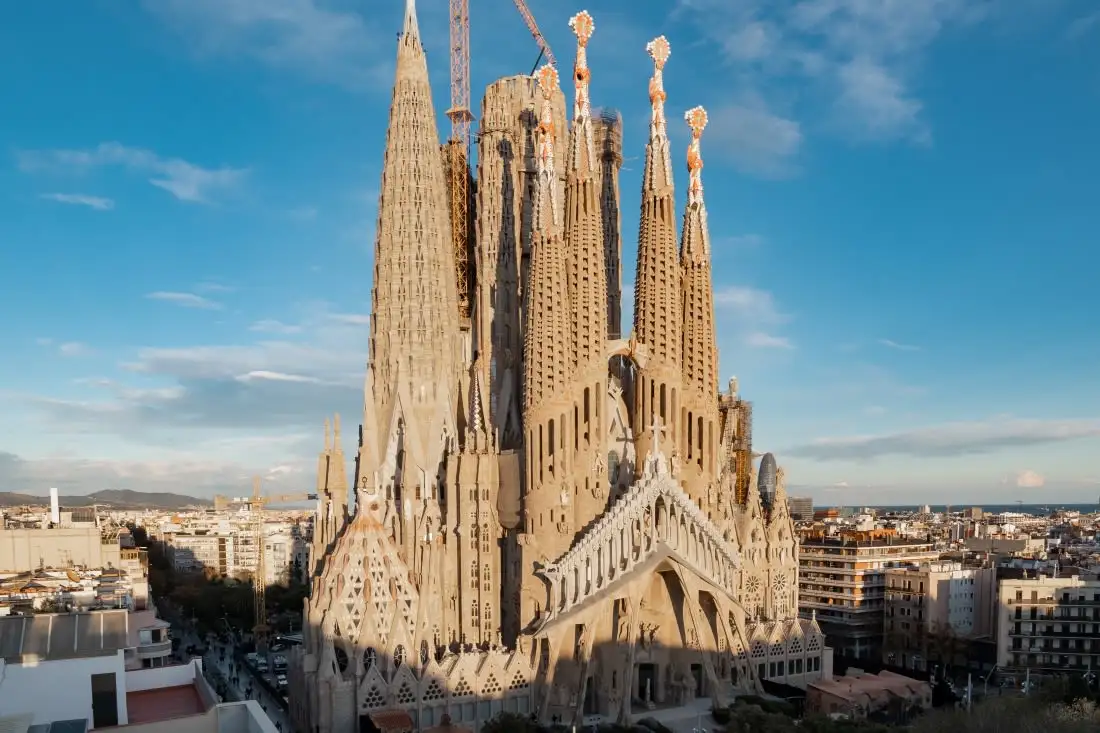
10 Days
From$2890USD

10 Days
From$2599USD
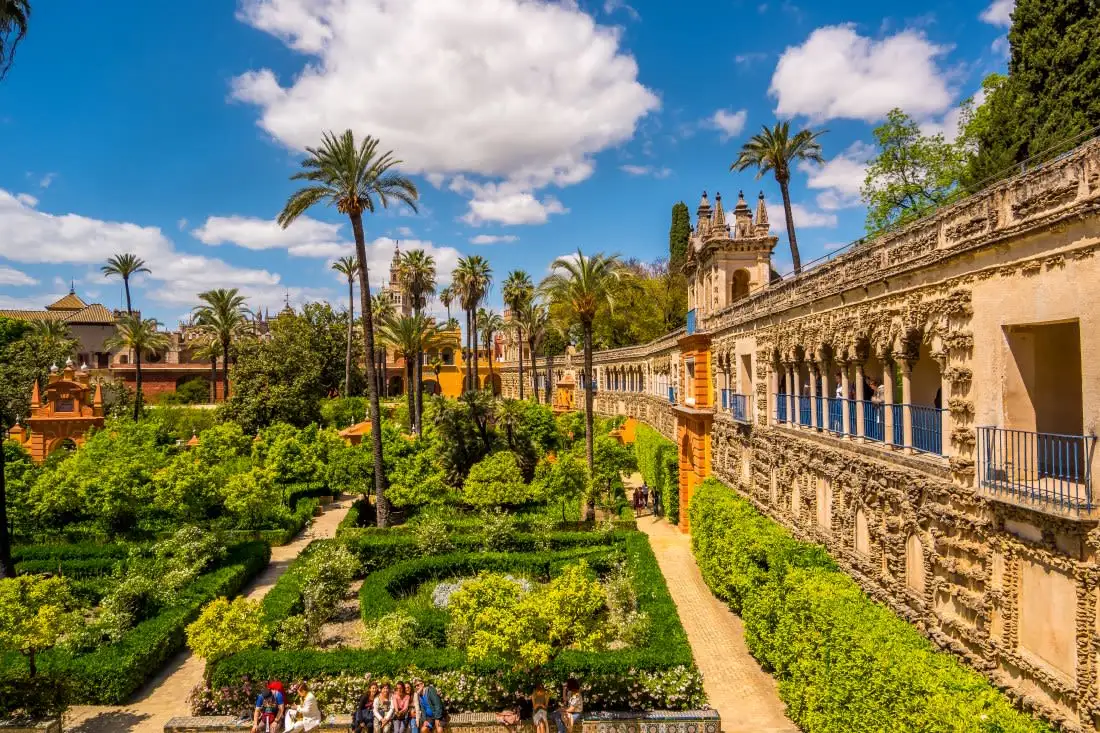
10 Days
From$2595USD

10 Days
From$2799USD

14 Days
From$3679USD

15 Days
From$3832USD

5 Days
From$1399USD

21 Days
From$4999USD

7 Days
From$1998USD

10 Days
From$2890USD

10 Days
From$2599USD

10 Days
From$2595USD
prev
next
Featured Blogs
prev
next
Our Customers Say It Best
Marianne Strydom, Paarl, South Africa
I just wanted to thank you for organizing an amazing trip for me – I packed in so much in such a short period of time and everything was just perfect. The way you do things makes it possible to really get to know the destination, which for me as a travel agent could not have been better. 

Otto Chuy, Los Angeles, California
I am still surprised how everything worked as planned, without a hitch. All instructions in your itinerary were precise and correct. Your suggestions and comments in each of the locations we went to were very helpful. All your guides, without exception, were wonderful and exactly on time. 

Malini Dutta, Boston, Massachusetts
We can't thank you enough for the detailed plans, maps, and suggestions. It really felt that someone was holding our hands and showing us around. We had all the excitement of discovering foreign lands, with none of the problems that can happen while negotiating unfamiliar places. In fact, all the cities felt like home within a few hours of arriving and exploring. 

Bev and Mark Frankel, Williamsburg, Virginia
We could not be more pleased with Go Real Travel! You took the guess work out of things like public transport but still managed to allow us the freedom to tour as we wanted. Our guides were exceptional and every time I saw a Viking Cruise tour of 25 people, I realized the quality experience we were getting with Go Real. 

Marianne Strydom, Paarl, South Africa
I just wanted to thank you for organizing an amazing trip for me – I packed in so much in such a short period of time and everything was just perfect. The way you do things makes it possible to really get to know the destination, which for me as a travel agent could not have been better. 

Otto Chuy, Los Angeles, California
I am still surprised how everything worked as planned, without a hitch. All instructions in your itinerary were precise and correct. Your suggestions and comments in each of the locations we went to were very helpful. All your guides, without exception, were wonderful and exactly on time. 

Malini Dutta, Boston, Massachusetts
We can't thank you enough for the detailed plans, maps, and suggestions. It really felt that someone was holding our hands and showing us around. We had all the excitement of discovering foreign lands, with none of the problems that can happen while negotiating unfamiliar places. In fact, all the cities felt like home within a few hours of arriving and exploring. 

Bev and Mark Frankel, Williamsburg, Virginia
We could not be more pleased with Go Real Travel! You took the guess work out of things like public transport but still managed to allow us the freedom to tour as we wanted. Our guides were exceptional and every time I saw a Viking Cruise tour of 25 people, I realized the quality experience we were getting with Go Real. 



Explore cities in more detail

Rome
One of the must-sees of Italy, and indeed all of Europe, Rome is a city with history flowing through its veins. There is an endless amount to see, do, and learn here, with something for every taste and disposition. Rome was the center of Western civilization for a Millenium and during that time, accumulated a list of historical and cultural treasures that no other destination can truly match. The Pantheon, Colosseum, Roman Forum, and Cirus of Maxentius are just a few examples of what can be seen and experienced in Rome, which at times feels more like a giant outdoor museum than a city. At Rome’s heart, you’ll find the Vatican, home of the Roman Catholic Church and the Pope. Here visitors can see the legendary Sistine Chapel. Transcending a mere building, the chapel is a walk-in work of art. Although historical sights can be found on just about every corner, it’s entirely possible to fill a day just wandering around Rome. The city’s charming streets and open Piazzas are filled with beautiful sights and places to sit, grab the best Cappuccino in the world, and enjoy the view.

Learn About Rome
Build Rome Trip
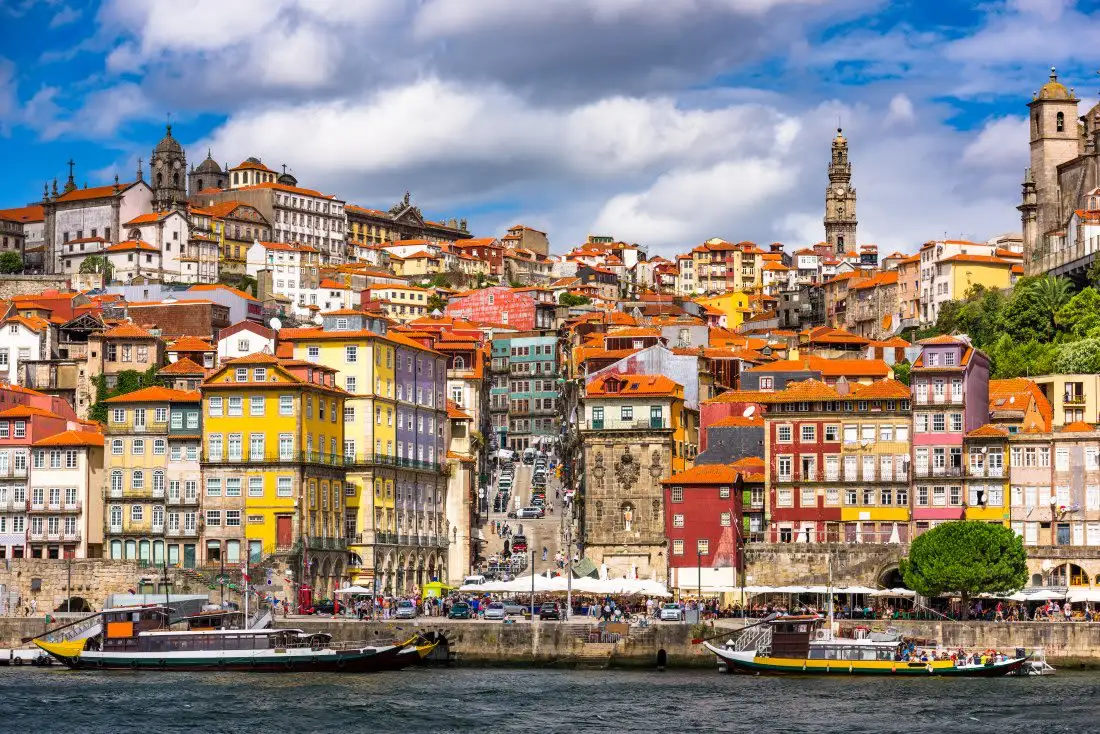
Porto
With cliffs like these, who needs skyscrapers? Porto drapes its steep hillsides with colorful homes, ancient palaces, convents, and factories, each telling a story. These precipitous structures loom above the bustling Ribeira District, or sparkle like jewels when viewed from the venerable Clérigos Tower, perched on a central hilltop. Porto can be sunny or rainy, just like its architecture; the sober, local granite provides a solid foundation from which bright azulejos tiles radiate warmth. The locals’ homes that still grace even the most touristed areas are as thrilling to see as the iconic Sé Cathedral. Explore Porto's winding streets through the Centro Histórico, marvel at the nearly magical Lello bookstore, sip and snack your way through the vibrant Bolhão market, or delve into the rich history of port wine. With our Porto travel guide and tailored Porto travel itineraries, you’ll uncover delightful contrasts of old and new. No matter where you wander, Porto promises to leave you with sweet memories of its breathtaking heights and vibrant spirit.

Learn About Porto
Build Porto Trip
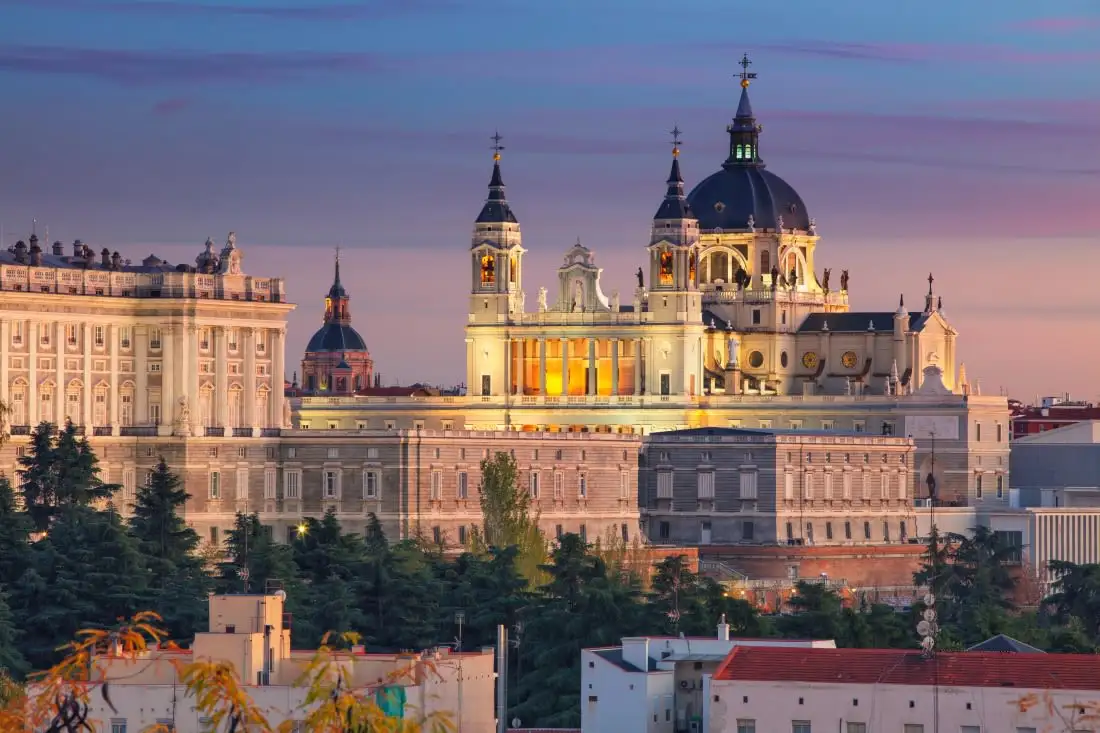
Madrid
What are the best Madrid recommendations for Madrid travel? Take two parts culture, two part history, douse it with art, sprinkle it all with lots of Spanish zest, and live vigorously: That's the recipe for Madrid, Spain's capital. Let Go Real be your guide to Madrid, the city alive with the rhythms of passionate flamenco on its cosmopolitan streets, inviting travelers into its warm embrace. Here, art enthusiasts can lose themselves in the hallowed halls of the Prado Museum, home to masterpieces by Velázquez, Goya, and El Greco, while the Reina Sofia and Thyssen-Bornemisza museums complete Madrid's famed Art Triangle, offering a journey through centuries of art history. The city's culinary scene is equally compelling, with tapas bars and bustling markets like Mercado San Miguel offering a taste of Spain's rich gastronomic heritage through an array of tapas, wines, and cheeses. Madrid's architectural splendor is evident in its royal palaces, ornate plazas, and expansive parks, such as the Retiro, a green oasis in the heart of the city where locals and tourists alike find respite by its serene lake. As night falls, Madrid's streets come alive with an infectious energy, from the historic tapas bars in the Latina district to the chic dancehalls in Malasaña and Chueca, reflecting the city's open-hearted spirit and its inhabitants' joie de vivre. With Go Real's Madrid sightseeing guide and using our Madrid tips, you will find the best place to bask in the sun at a lively terrace café, explore the treasures of the Hapsburg Madrid, or discover your own precious finds at Rastro's flea market. With our best Madrid travelguide, the city offers an endless array of experiences that beckon the curious traveler to taste its many charms.

Learn About Madrid
Build Madrid Trip
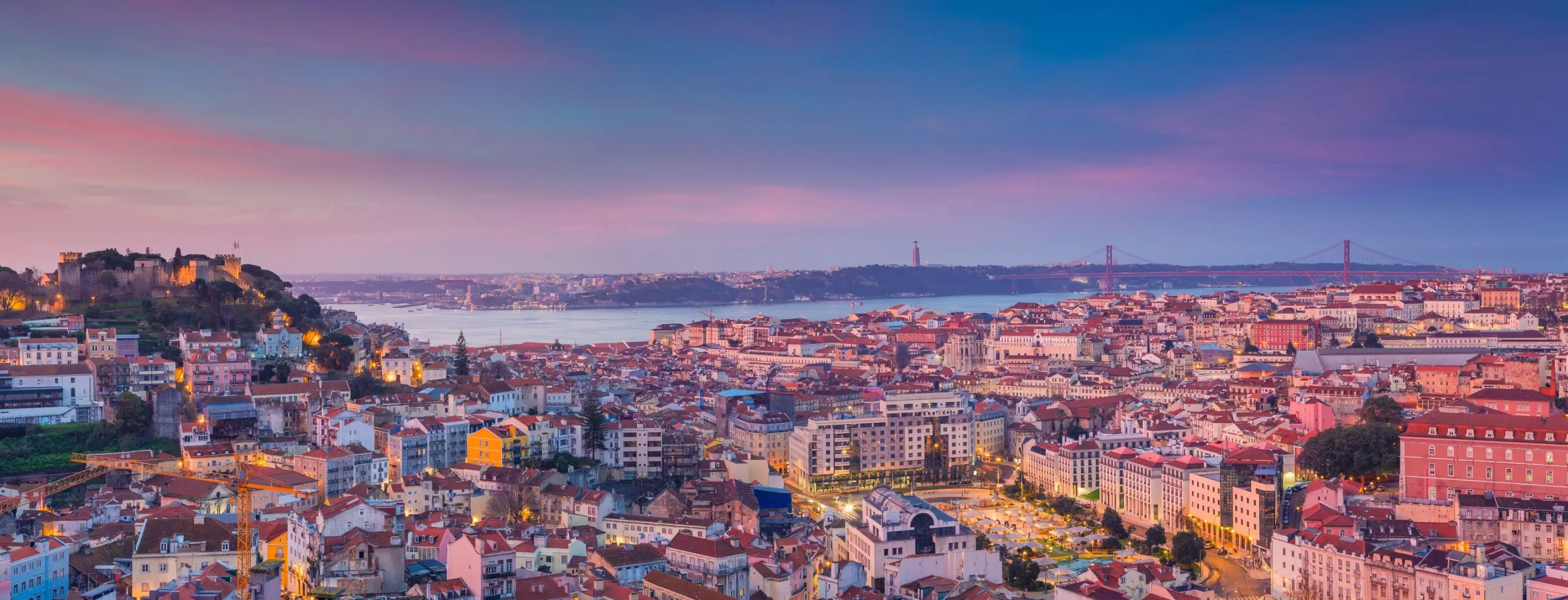
Lisbon
The charm of Lisbon is simply irresistible. One of Europe's "forgotten" capitals, Lisbon effortlessly blends old-world history with a modern, cosmopolitan vibe. A must-visit destination for any traveler, Lisbon offers iconic sights like the historic Belém Tower and the stunning Jerónimos Monastery, both UNESCO World Heritage Sites. There is so much to experience in this city, and it helps to explore it through your own personal interests. Foodie? You’re in luck. Lisbon's cuisine will capture your heart with fresh seafood at Mercado da Ribeira and the famed pastéis de nata from Pastéis de Belém. Love history? Discover the city’s past through the ancient streets of Alfama, where every corner unveils a piece of Lisbon’s storied heritage, from Roman influences to the Age of Exploration. Art and architecture lovers will be enchanted by the Azulejos (traditional tiles) that decorate the city, or can dive into contemporary works at the MAAT museum. And as you climb the hills of Bairro Alto or gaze across the city from the iconic viewpoint at Miradouro da Senhora do Monte, you'll realize that Lisbon’s beauty never fades. Whether riding a vintage tram through the narrow streets or watching the sunset over the River Tagus, it’s easy to fall in love with this sun-drenched gem of Portugal.

Learn About Lisbon
Build Lisbon Trip
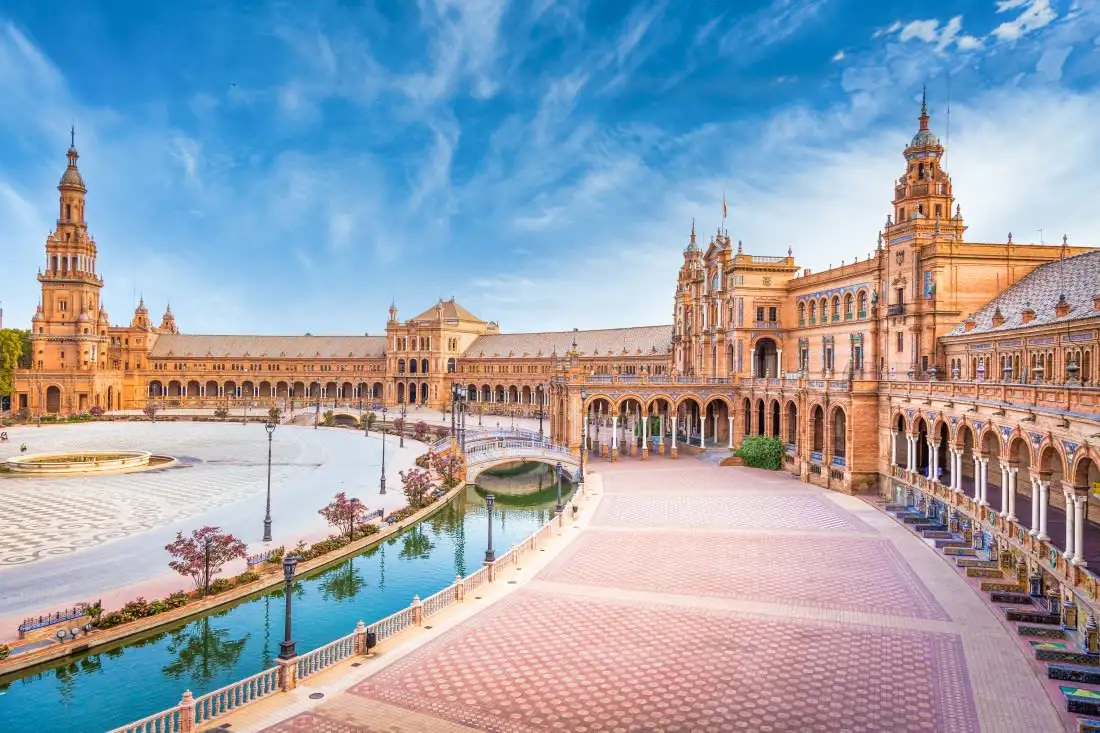
Seville
Seville, the capital of Spain's Andalusia region, is a city rich in history and culture. Architectural marvels like Plaza de España, Seville Cathedral, and the Alcazar reflect its storied past, while its vibrant cuisine and flamenco music showcase its lively present. Key landmarks include the Giralda, a minaret turned bell tower, and the bustling old town, filled with narrow streets, traditional tapas bars, and lively plazas. Whether exploring historical sites or savoring local flavors, Seville captivates with its spirited atmosphere and colorful heritage, making it a true center of Spanish culture and tradition.

Learn About Seville
Build Seville Trip

Barcelona
Barcelona, the cosmopolitan capital of Catalonia, is a city that dances to a rhythm of its own. Known for its architectural wonders and vibrant street life, this city is a tapestry of rich history and contemporary culture. Wander through its bustling streets and you'll feel the pulse of heritage and innovation beating as one. From the awe-inspiring Sagrada Familia to the colorful mosaics of Park Guell, Barcelona offers endless avenues to explore and discover. As the sun sets, the city transforms into a lively spectacle of lights and shadows, inviting you to indulge in its culinary delights and spirited nightlife. Whether you’re soaking up the Mediterranean sun on its beaches or exploring its Gothic quarters, Barcelona promises an unforgettable journey that will captivate your heart and stir your soul.

Learn About Barcelona
Build Barcelona Trip

Rome
One of the must-sees of Italy, and indeed all of Europe, Rome is a city with history flowing through its veins. There is an endless amount to see, do, and learn here, with something for every taste and disposition. Rome was the center of Western civilization for a Millenium and during that time, accumulated a list of historical and cultural treasures that no other destination can truly match. The Pantheon, Colosseum, Roman Forum, and Cirus of Maxentius are just a few examples of what can be seen and experienced in Rome, which at times feels more like a giant outdoor museum than a city. At Rome’s heart, you’ll find the Vatican, home of the Roman Catholic Church and the Pope. Here visitors can see the legendary Sistine Chapel. Transcending a mere building, the chapel is a walk-in work of art. Although historical sights can be found on just about every corner, it’s entirely possible to fill a day just wandering around Rome. The city’s charming streets and open Piazzas are filled with beautiful sights and places to sit, grab the best Cappuccino in the world, and enjoy the view.

Learn About Rome
Build Rome Trip

Porto
With cliffs like these, who needs skyscrapers? Porto drapes its steep hillsides with colorful homes, ancient palaces, convents, and factories, each telling a story. These precipitous structures loom above the bustling Ribeira District, or sparkle like jewels when viewed from the venerable Clérigos Tower, perched on a central hilltop. Porto can be sunny or rainy, just like its architecture; the sober, local granite provides a solid foundation from which bright azulejos tiles radiate warmth. The locals’ homes that still grace even the most touristed areas are as thrilling to see as the iconic Sé Cathedral. Explore Porto's winding streets through the Centro Histórico, marvel at the nearly magical Lello bookstore, sip and snack your way through the vibrant Bolhão market, or delve into the rich history of port wine. With our Porto travel guide and tailored Porto travel itineraries, you’ll uncover delightful contrasts of old and new. No matter where you wander, Porto promises to leave you with sweet memories of its breathtaking heights and vibrant spirit.

Learn About Porto
Build Porto Trip

Madrid
What are the best Madrid recommendations for Madrid travel? Take two parts culture, two part history, douse it with art, sprinkle it all with lots of Spanish zest, and live vigorously: That's the recipe for Madrid, Spain's capital. Let Go Real be your guide to Madrid, the city alive with the rhythms of passionate flamenco on its cosmopolitan streets, inviting travelers into its warm embrace. Here, art enthusiasts can lose themselves in the hallowed halls of the Prado Museum, home to masterpieces by Velázquez, Goya, and El Greco, while the Reina Sofia and Thyssen-Bornemisza museums complete Madrid's famed Art Triangle, offering a journey through centuries of art history. The city's culinary scene is equally compelling, with tapas bars and bustling markets like Mercado San Miguel offering a taste of Spain's rich gastronomic heritage through an array of tapas, wines, and cheeses. Madrid's architectural splendor is evident in its royal palaces, ornate plazas, and expansive parks, such as the Retiro, a green oasis in the heart of the city where locals and tourists alike find respite by its serene lake. As night falls, Madrid's streets come alive with an infectious energy, from the historic tapas bars in the Latina district to the chic dancehalls in Malasaña and Chueca, reflecting the city's open-hearted spirit and its inhabitants' joie de vivre. With Go Real's Madrid sightseeing guide and using our Madrid tips, you will find the best place to bask in the sun at a lively terrace café, explore the treasures of the Hapsburg Madrid, or discover your own precious finds at Rastro's flea market. With our best Madrid travelguide, the city offers an endless array of experiences that beckon the curious traveler to taste its many charms.

Learn About Madrid
Build Madrid Trip

Lisbon
The charm of Lisbon is simply irresistible. One of Europe's "forgotten" capitals, Lisbon effortlessly blends old-world history with a modern, cosmopolitan vibe. A must-visit destination for any traveler, Lisbon offers iconic sights like the historic Belém Tower and the stunning Jerónimos Monastery, both UNESCO World Heritage Sites. There is so much to experience in this city, and it helps to explore it through your own personal interests. Foodie? You’re in luck. Lisbon's cuisine will capture your heart with fresh seafood at Mercado da Ribeira and the famed pastéis de nata from Pastéis de Belém. Love history? Discover the city’s past through the ancient streets of Alfama, where every corner unveils a piece of Lisbon’s storied heritage, from Roman influences to the Age of Exploration. Art and architecture lovers will be enchanted by the Azulejos (traditional tiles) that decorate the city, or can dive into contemporary works at the MAAT museum. And as you climb the hills of Bairro Alto or gaze across the city from the iconic viewpoint at Miradouro da Senhora do Monte, you'll realize that Lisbon’s beauty never fades. Whether riding a vintage tram through the narrow streets or watching the sunset over the River Tagus, it’s easy to fall in love with this sun-drenched gem of Portugal.

Learn About Lisbon
Build Lisbon Trip

Seville
Seville, the capital of Spain's Andalusia region, is a city rich in history and culture. Architectural marvels like Plaza de España, Seville Cathedral, and the Alcazar reflect its storied past, while its vibrant cuisine and flamenco music showcase its lively present. Key landmarks include the Giralda, a minaret turned bell tower, and the bustling old town, filled with narrow streets, traditional tapas bars, and lively plazas. Whether exploring historical sites or savoring local flavors, Seville captivates with its spirited atmosphere and colorful heritage, making it a true center of Spanish culture and tradition.

Learn About Seville
Build Seville Trip

Barcelona
Barcelona, the cosmopolitan capital of Catalonia, is a city that dances to a rhythm of its own. Known for its architectural wonders and vibrant street life, this city is a tapestry of rich history and contemporary culture. Wander through its bustling streets and you'll feel the pulse of heritage and innovation beating as one. From the awe-inspiring Sagrada Familia to the colorful mosaics of Park Guell, Barcelona offers endless avenues to explore and discover. As the sun sets, the city transforms into a lively spectacle of lights and shadows, inviting you to indulge in its culinary delights and spirited nightlife. Whether you’re soaking up the Mediterranean sun on its beaches or exploring its Gothic quarters, Barcelona promises an unforgettable journey that will captivate your heart and stir your soul.

Learn About Barcelona
Build Barcelona Trip
prev
next


 Map of Your Itinerary Route
Map of Your Itinerary Route
Zoom In to the cities to see your itinerary in more detail


 4.8
4.8 
